
This long post is a short report of our recent trip to Iceland. Making this trip was part of the good resolutions I took in 2016 and I’m so happy I did it. I’ve already explained briefly what I learned from this trip in another post. Before you scroll down, please note none of the pictures below were photoshoped in any way. I hate photoshoped images and the effects I create are limited to those I can obtain with filters (polarizing or B+W grey filters), exposure times and the different lenses I use. This being said, enjoy the pictures and the trip report.
Day 0 : reaching Borgarnes
For this trip we decided to explore Iceland from home camps. The first one was in the western part of the country, in Borgarnes (a small 1000-inhabitant town, in green on the Google map above). From there we went on day trips (10 hours long on average) in our small SUV rented from Geysir. I had booked a place on AirBnB which was very conveniently located and surrounded by beautiful landscapes and horses. Already the first evening I was able to capture the beauty of Icelandic horses and nature. Dark clouds added a dramatic touch.
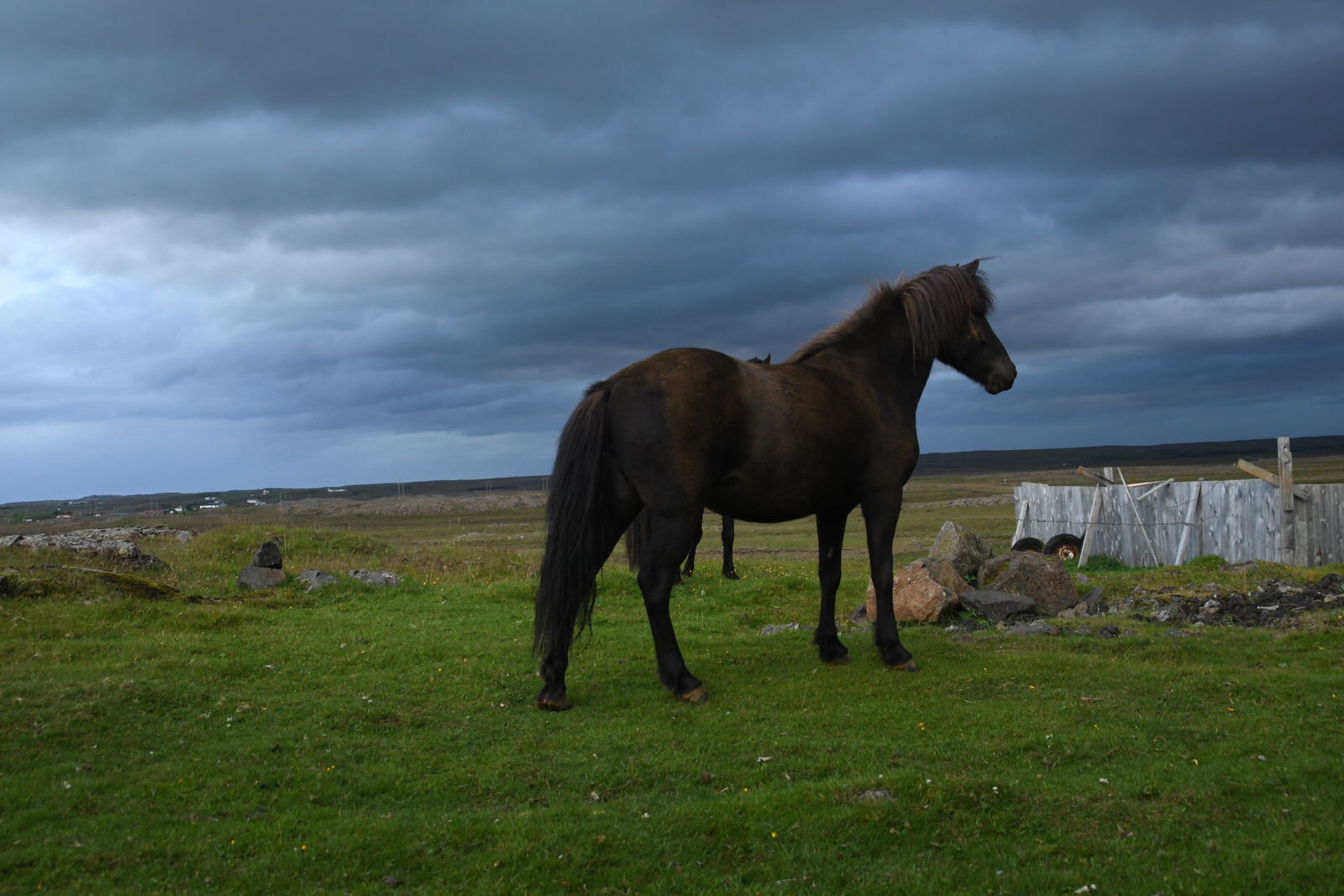
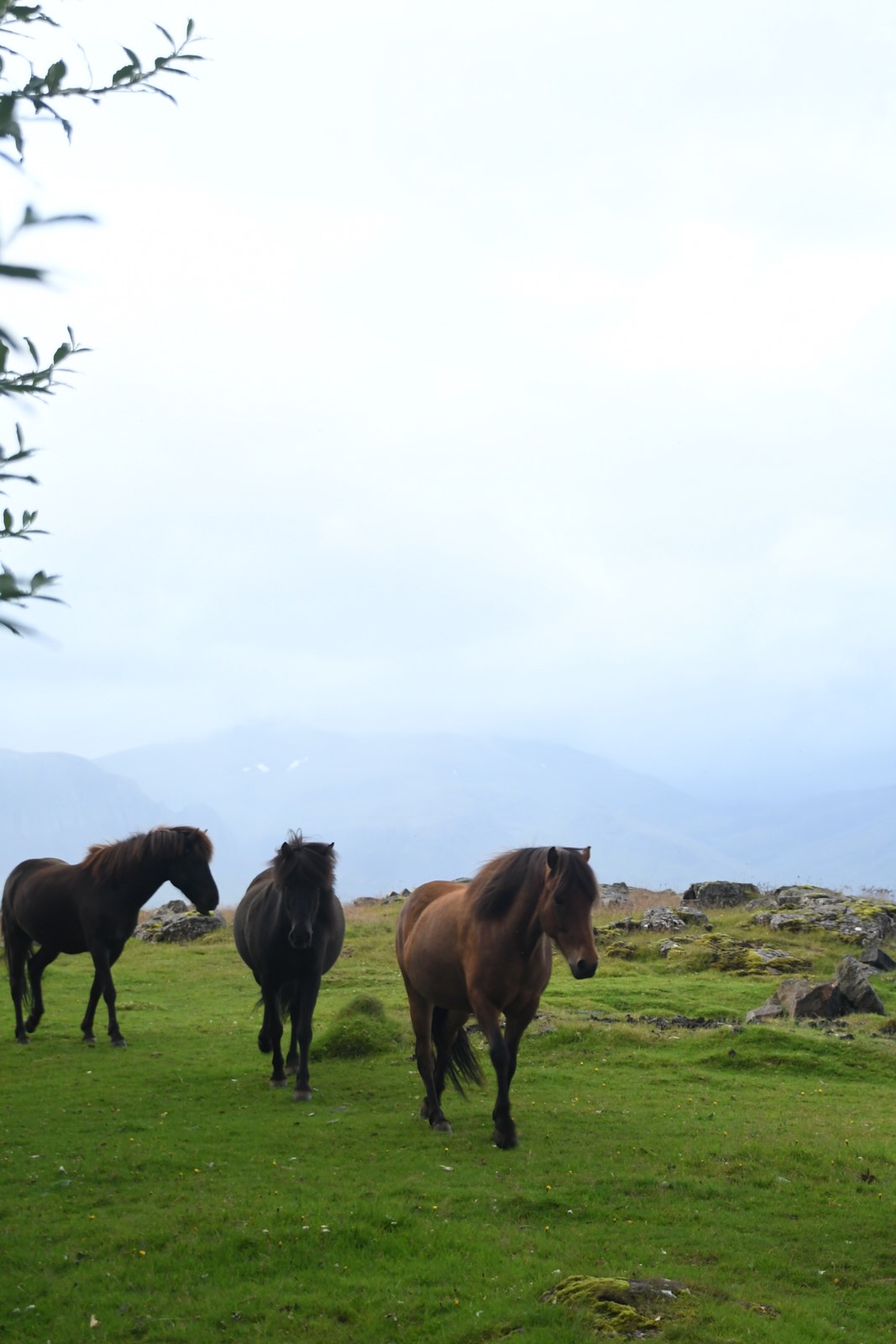
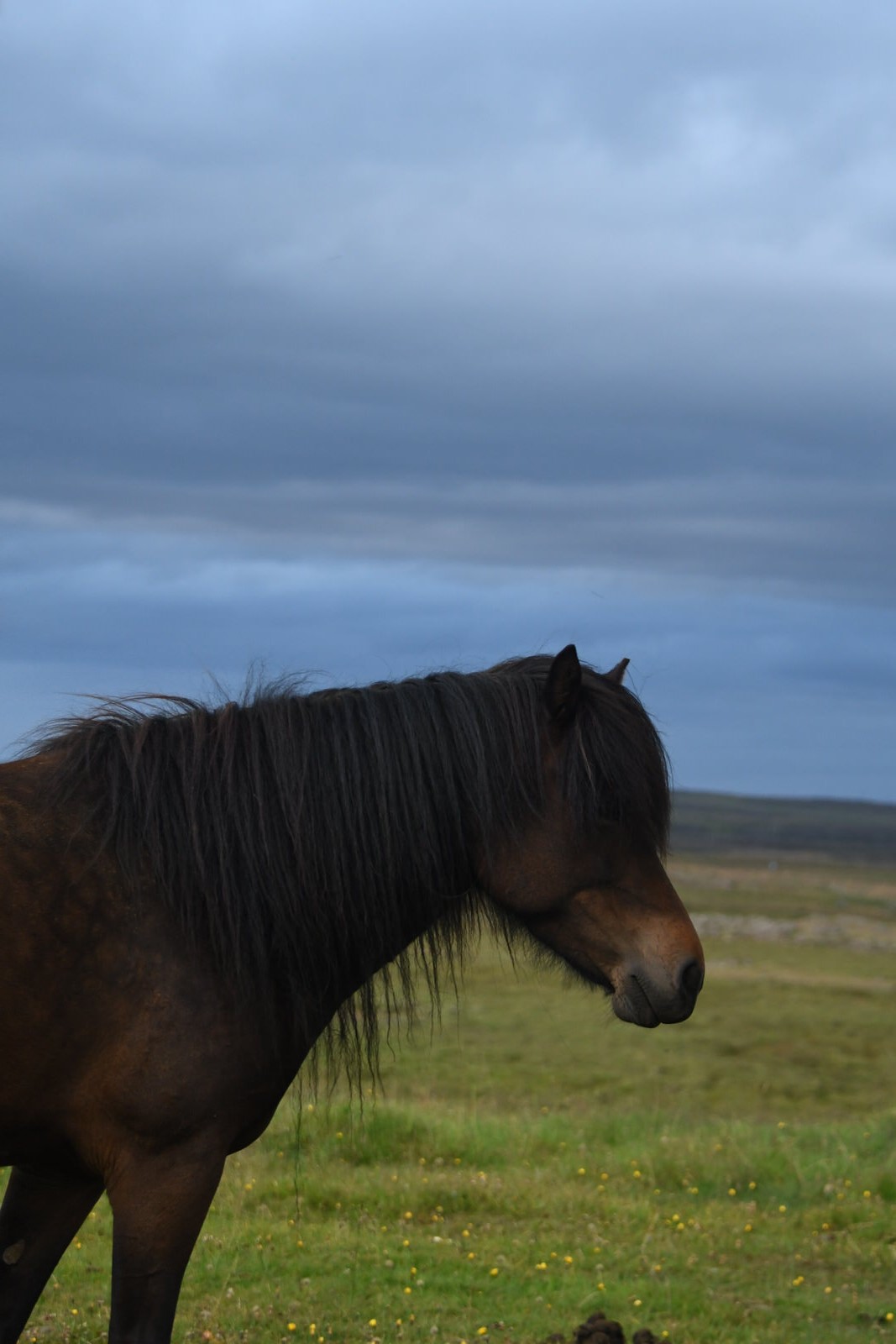
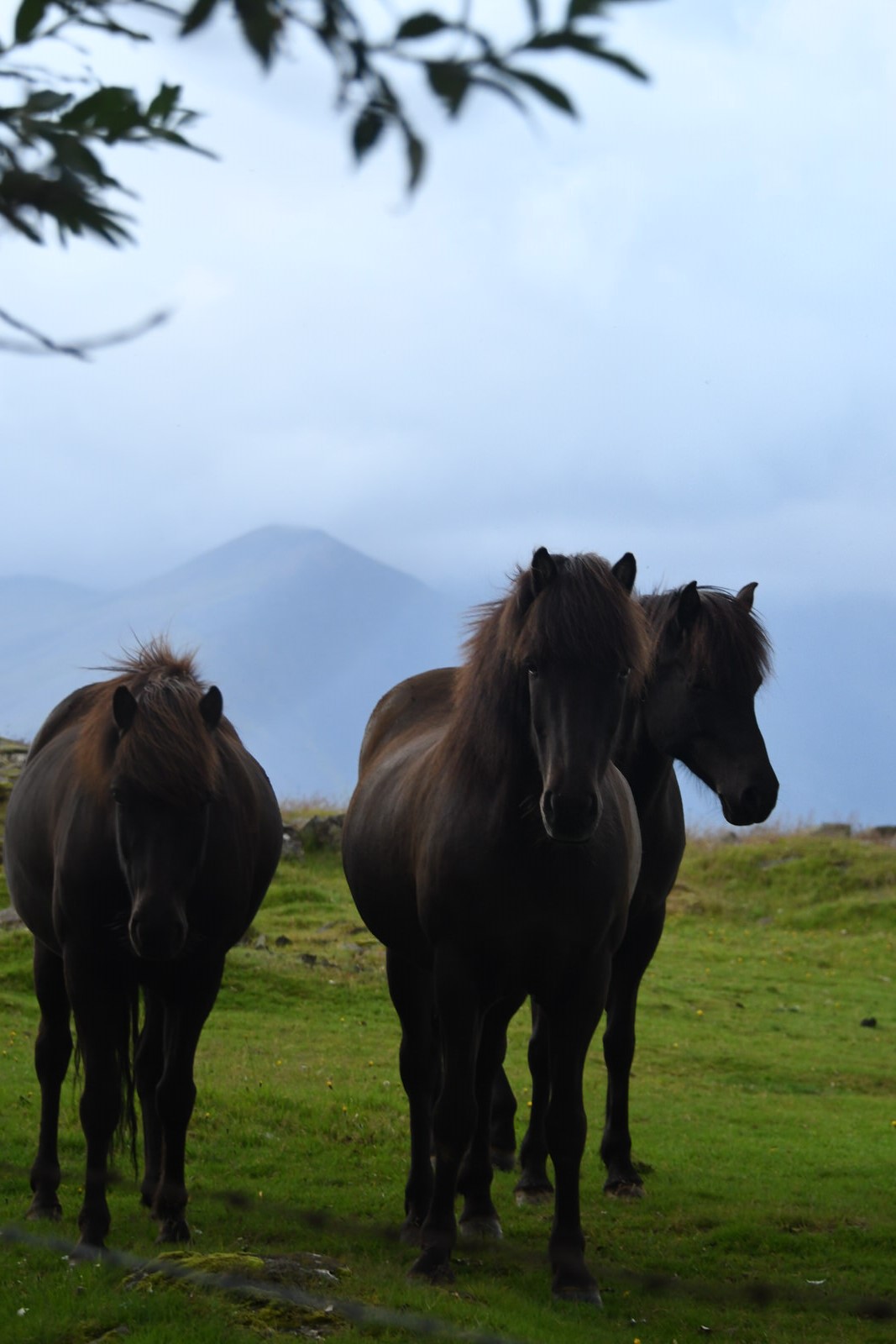
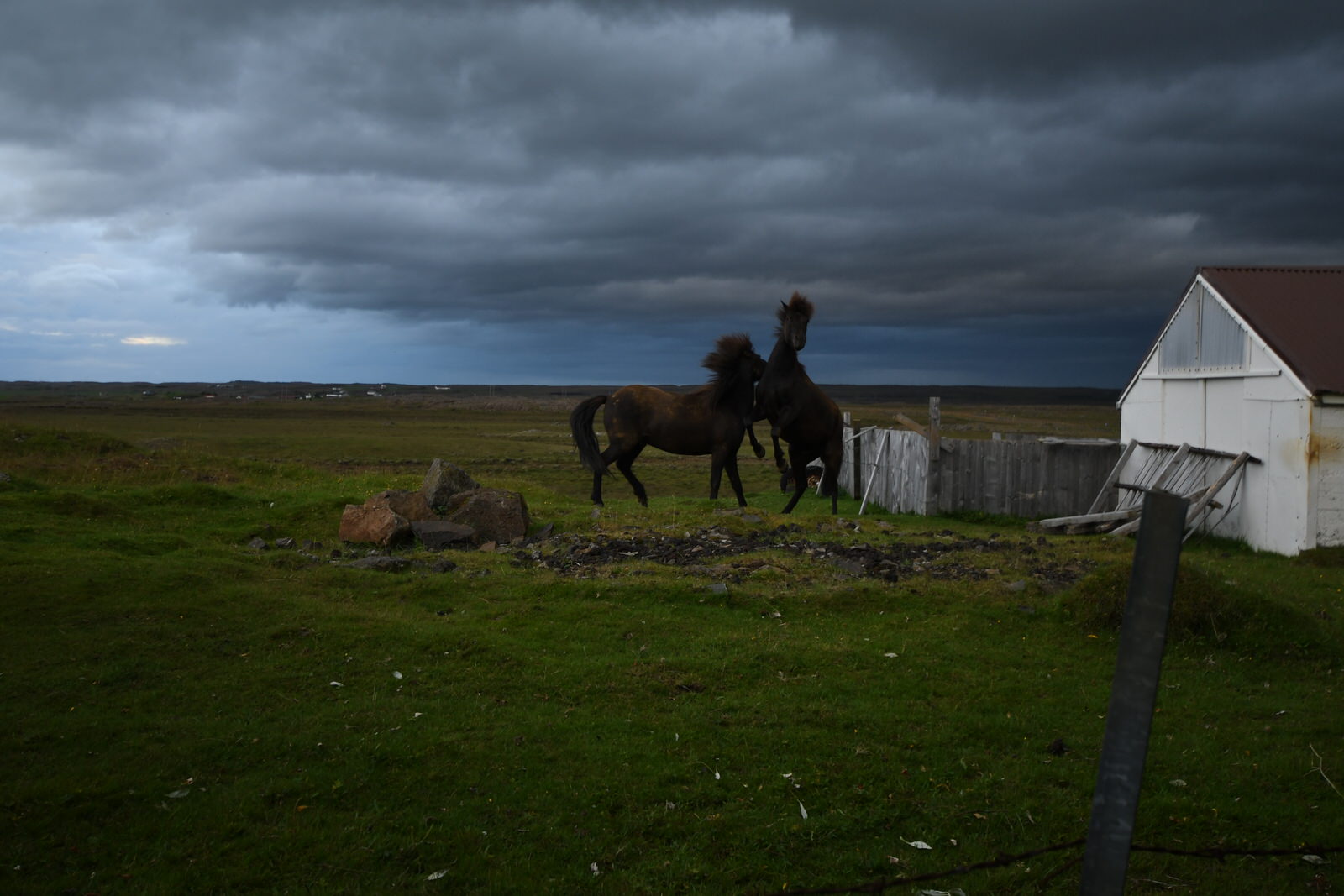
Day 1 : whale watching
We wake up very early on our first day (we are still 2 hours lagged) and I start taking pictures at around 6am. For our first day in Iceland we had booked a 3-hour whale watching tour with Laki Tours in Olafsvik. I had read that Husavik was the best place to watch whales but I took the risk of tour from Olafsvik and I wasn’t disappointed. Actually, the daily reports issued by Laki Tours showed that whales were observed on almost every single tour that had taken place in August. On our trip I was fortunate enough to spot the first Minke whale (far far away) and not long after we stumbled upon a large group of pilot whales which came close to the boat. It was the first time I had seen whales and I’ll never forget it. If you chose to go with Laki Tours, make sure you check their Facebook page to get daily reports.
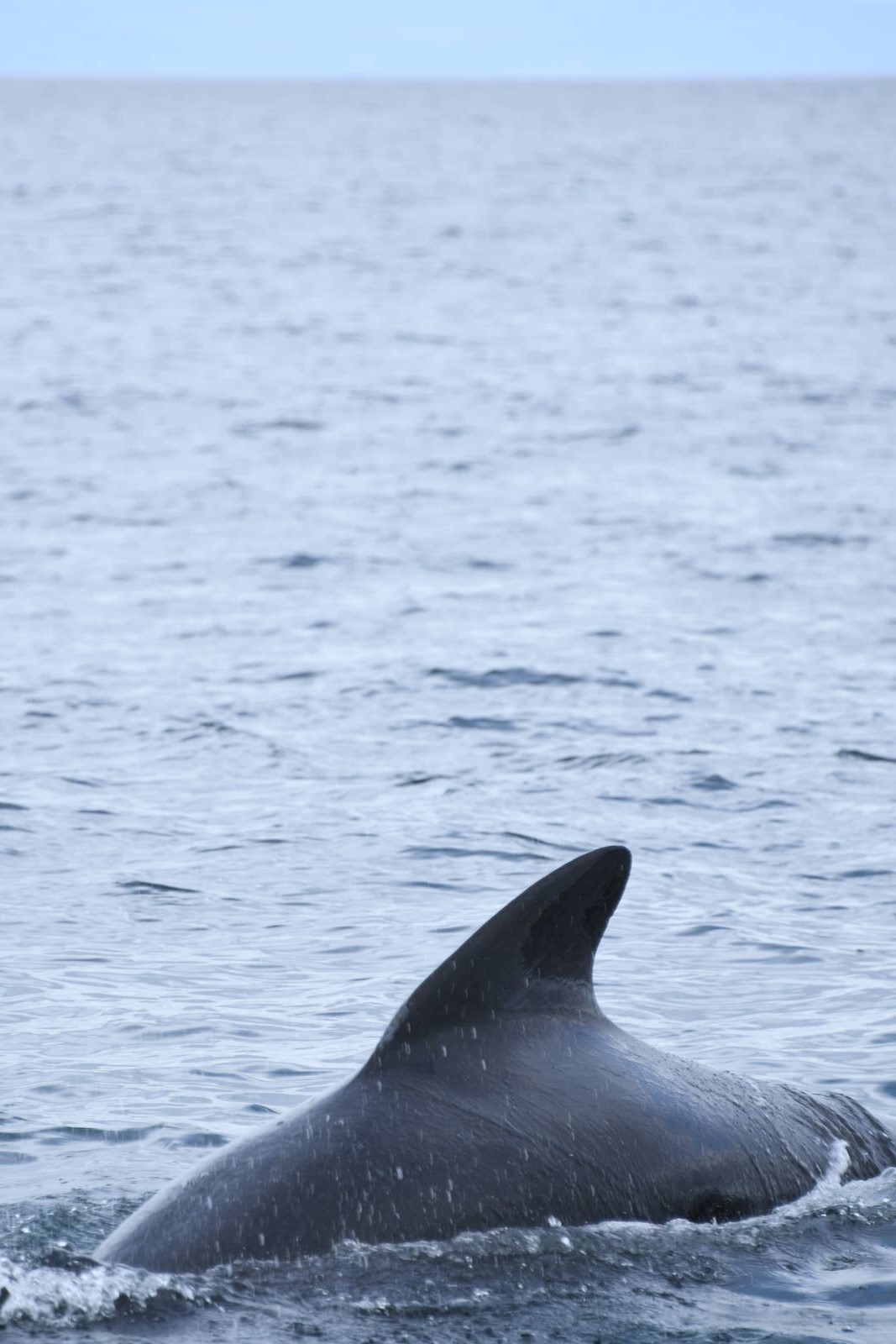
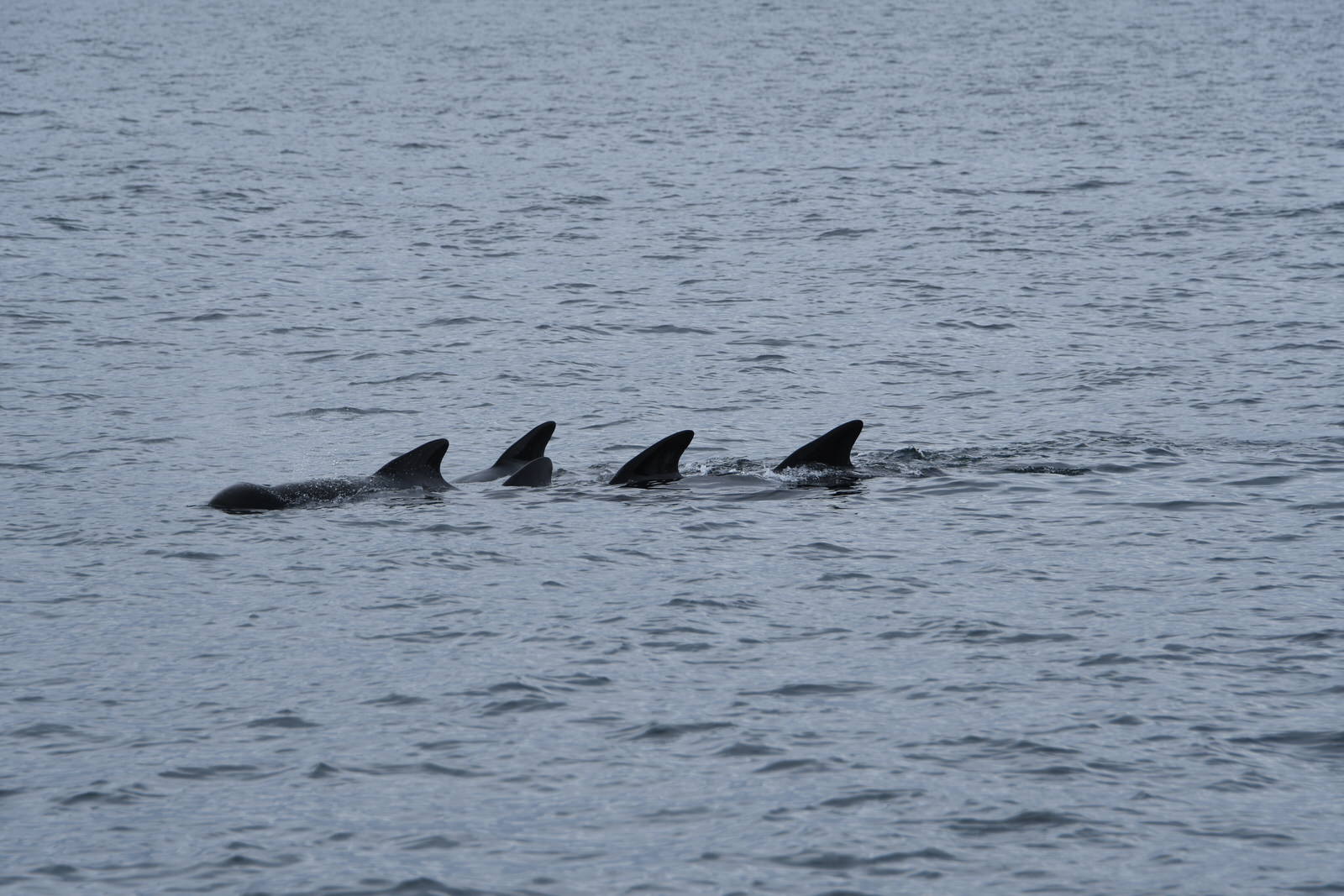
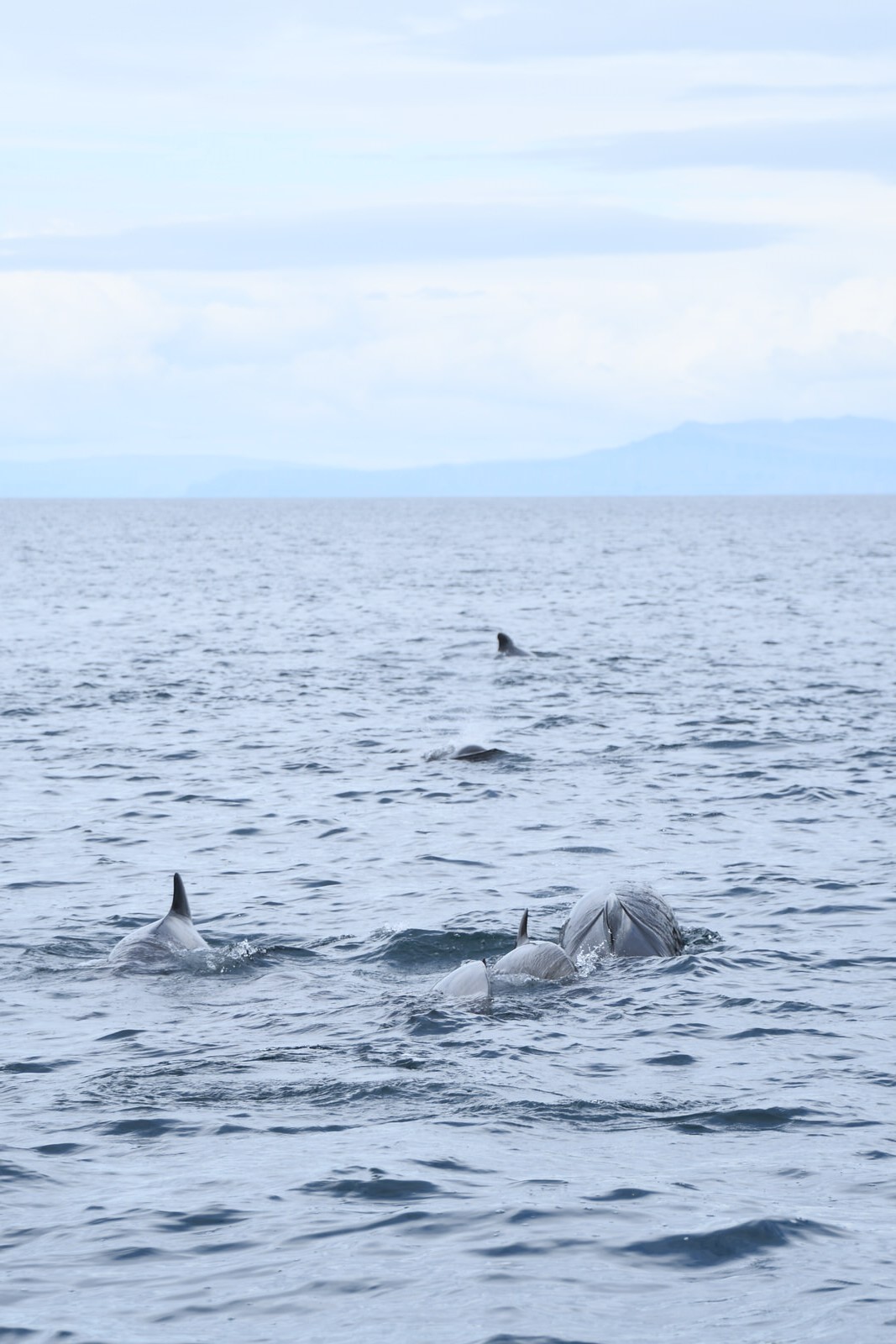
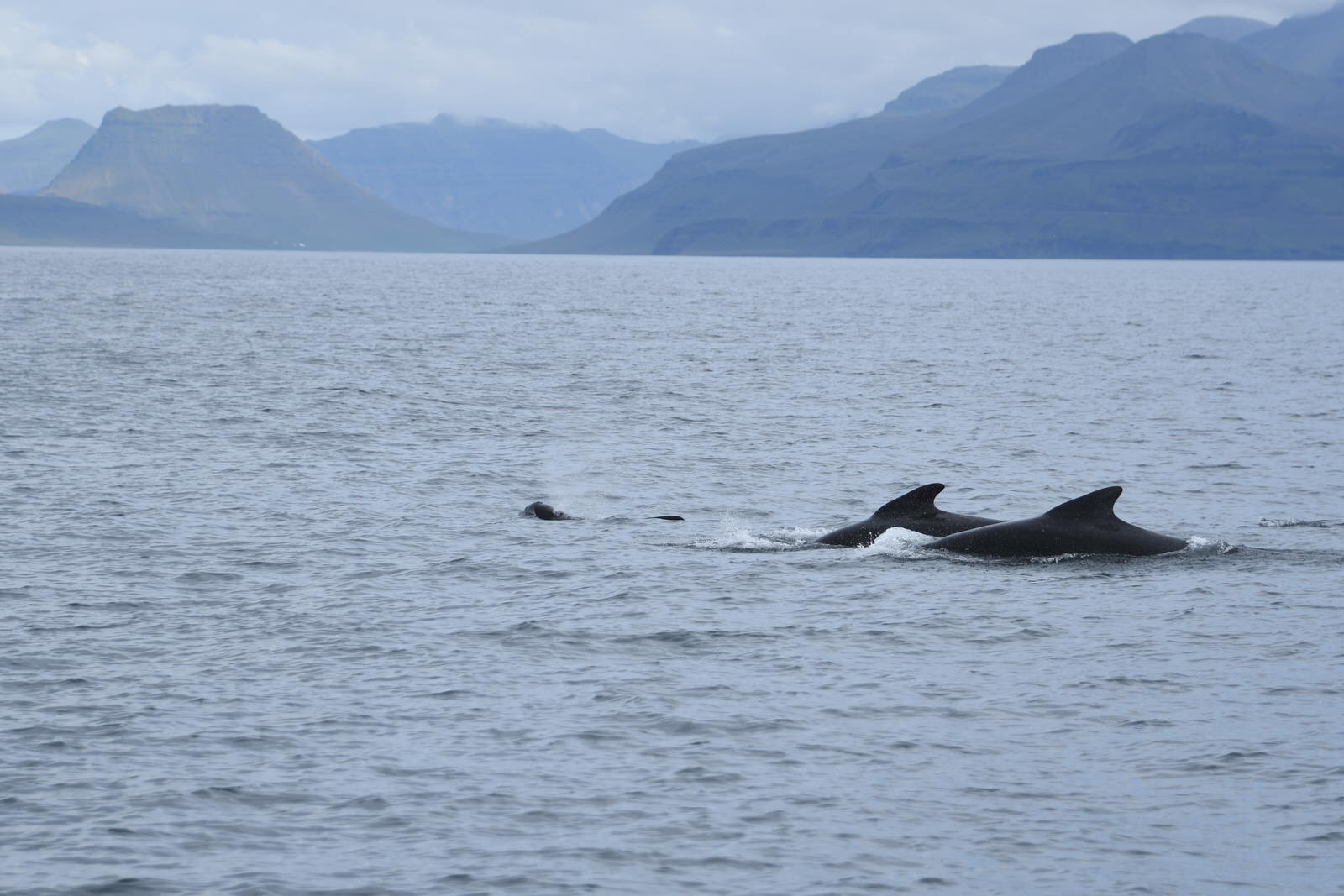
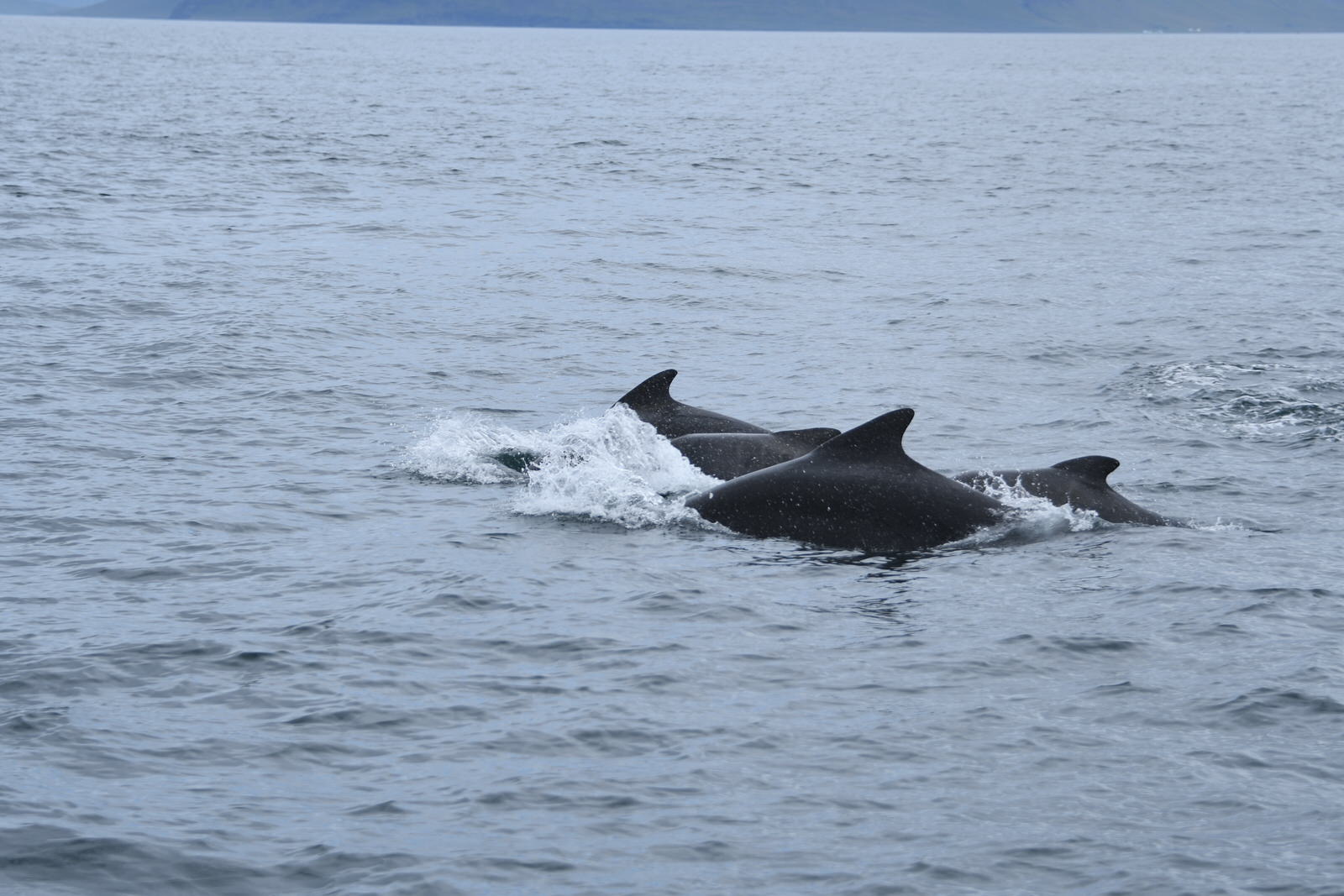
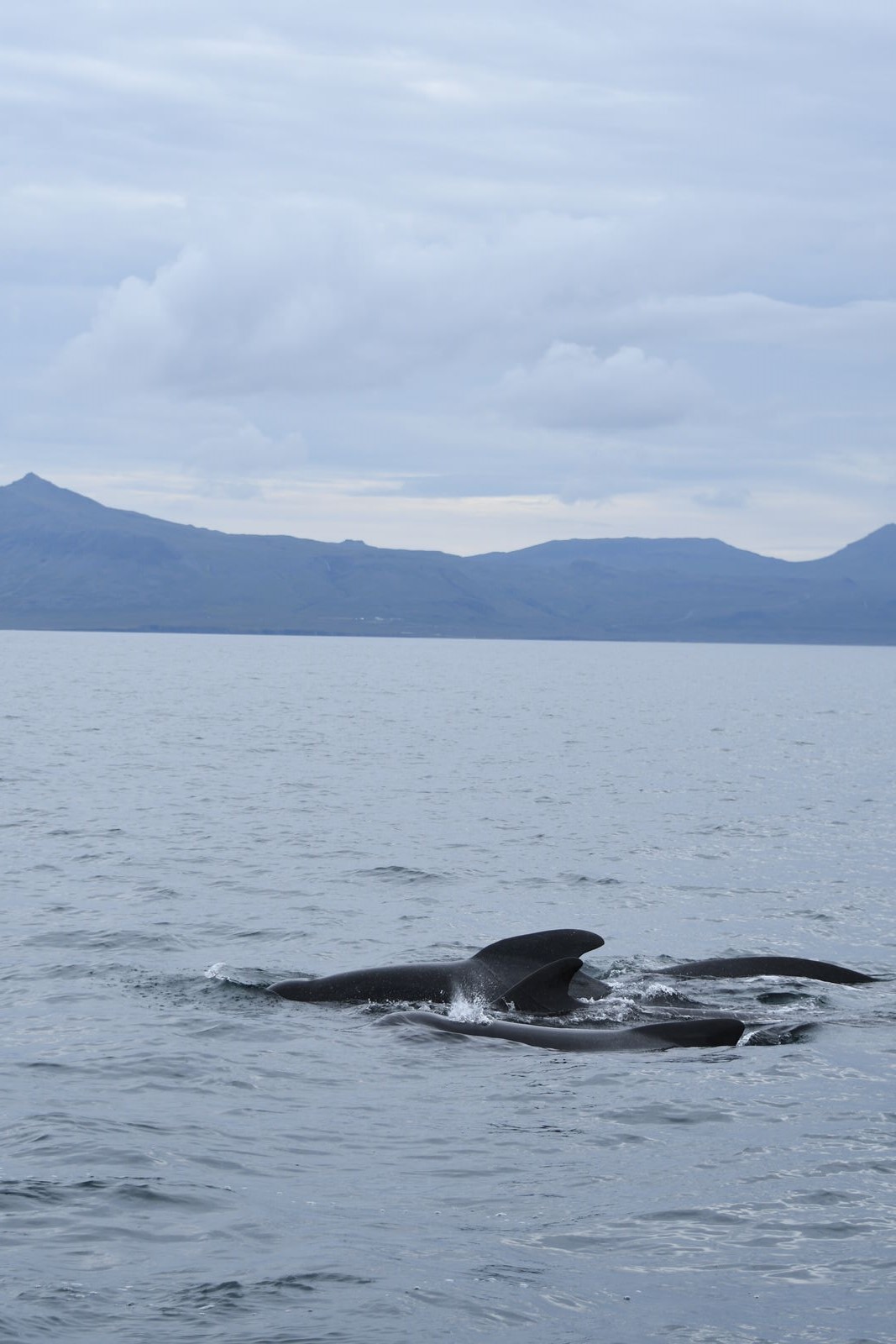
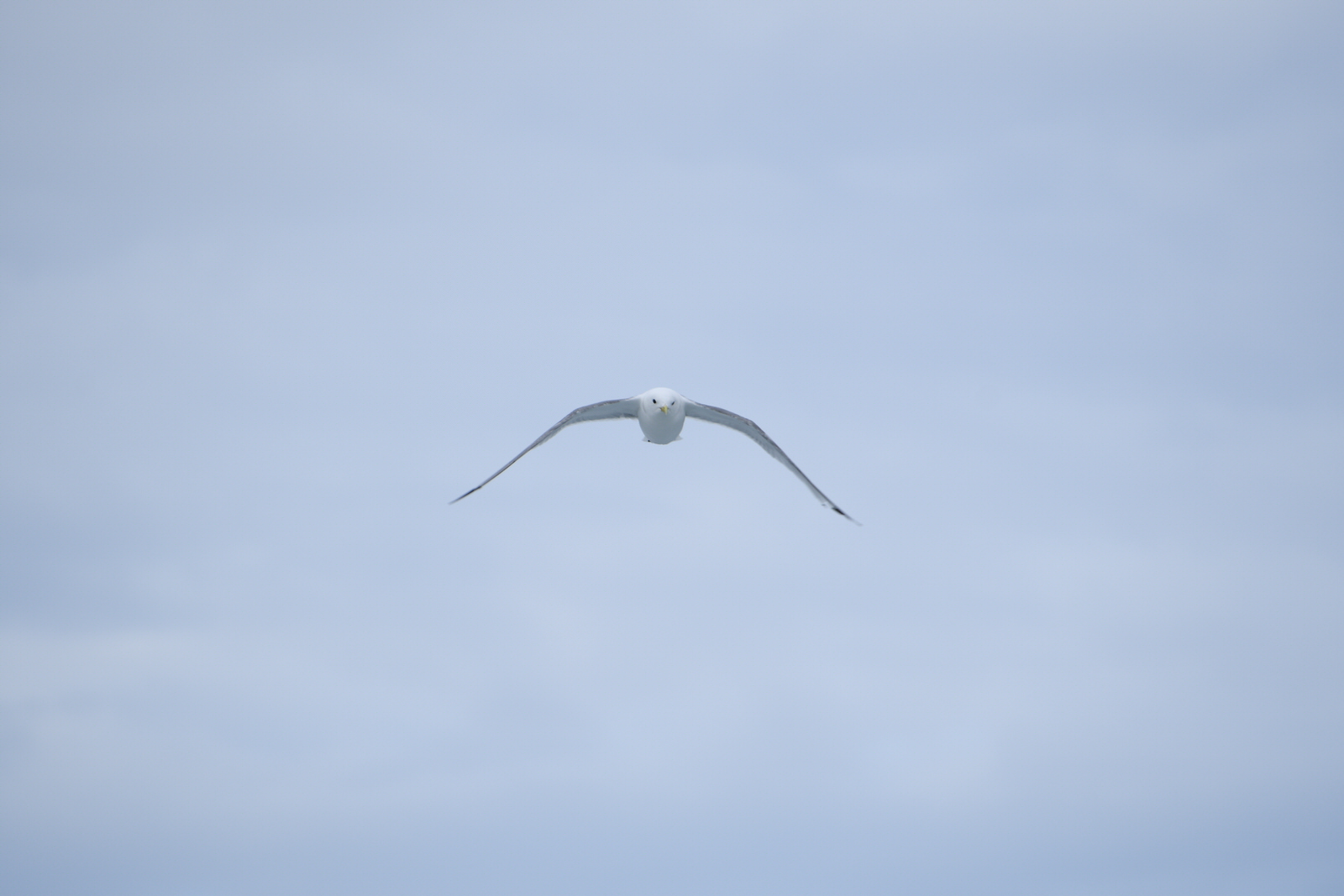
Day 2: Raudfeldsgja, Arnastapi, lava tunnel (Cave Vatnshellir)
We so much loved the landscapes of Snaefellness that we decided to go back on day 2. I had read about hiking from Arnastapi. On our way to this village we stopped in Raudfeldsgja. It looks so powerful and the view you get from inside the mountain (if you explore the river flowing between the cracks) is magical. After a short hike along the shores of Arnastapi (where you can observe some magnificent basaltic formations), we drove to … To explore a lava tube. My son loved it. Besides the discovery of this geological environment, I also recommend it because you can experience what darkness really means. It’s a really strange feeling to put your hand in front of your eyes and not to be able to see it. It’s so dark !
On our way back we stop quite a long time in Grundarfjördur to observe the Kirkjufell mountain. There I spend 30 minutes practicing my photography skills and take one of my favorite picture of the trip.
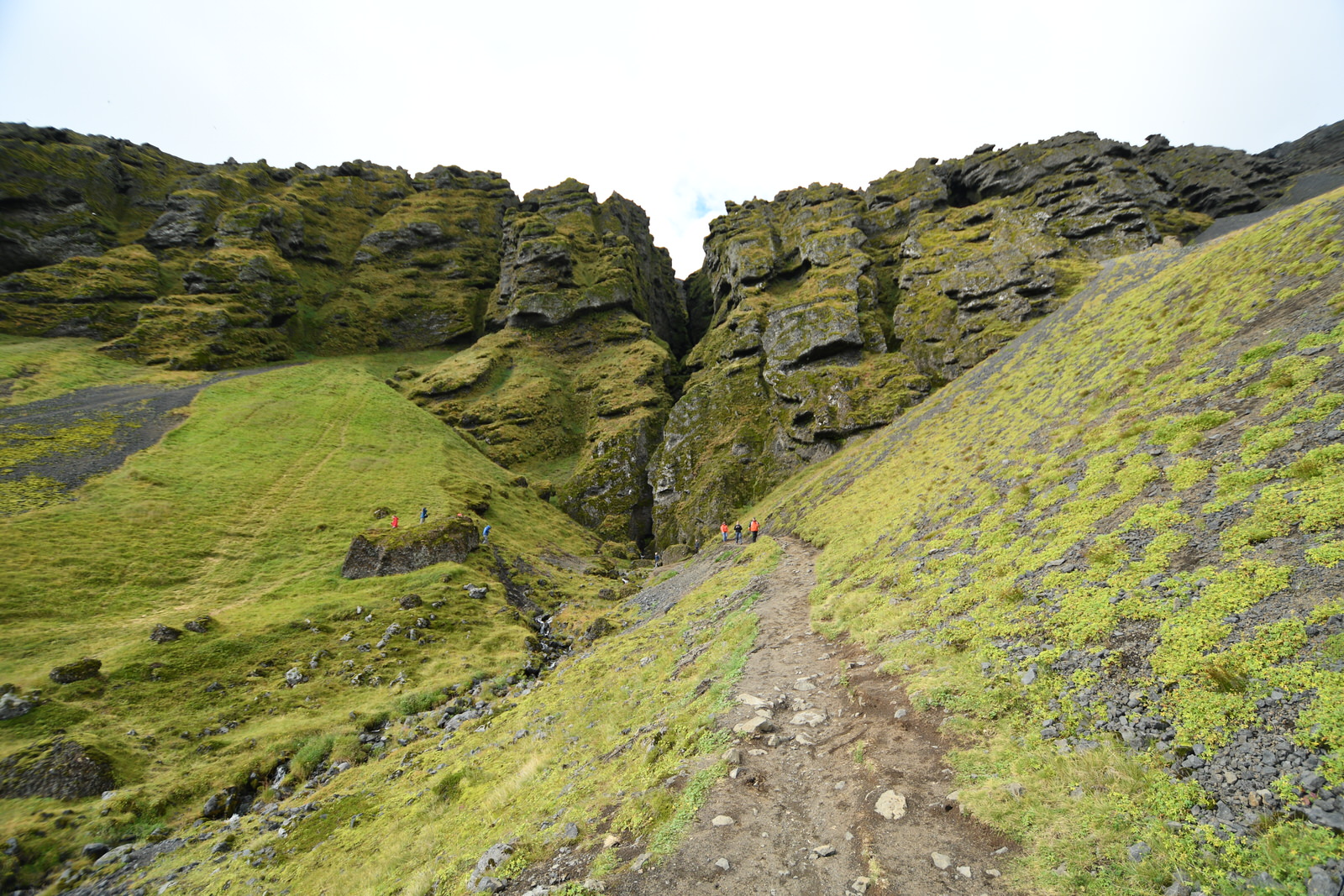
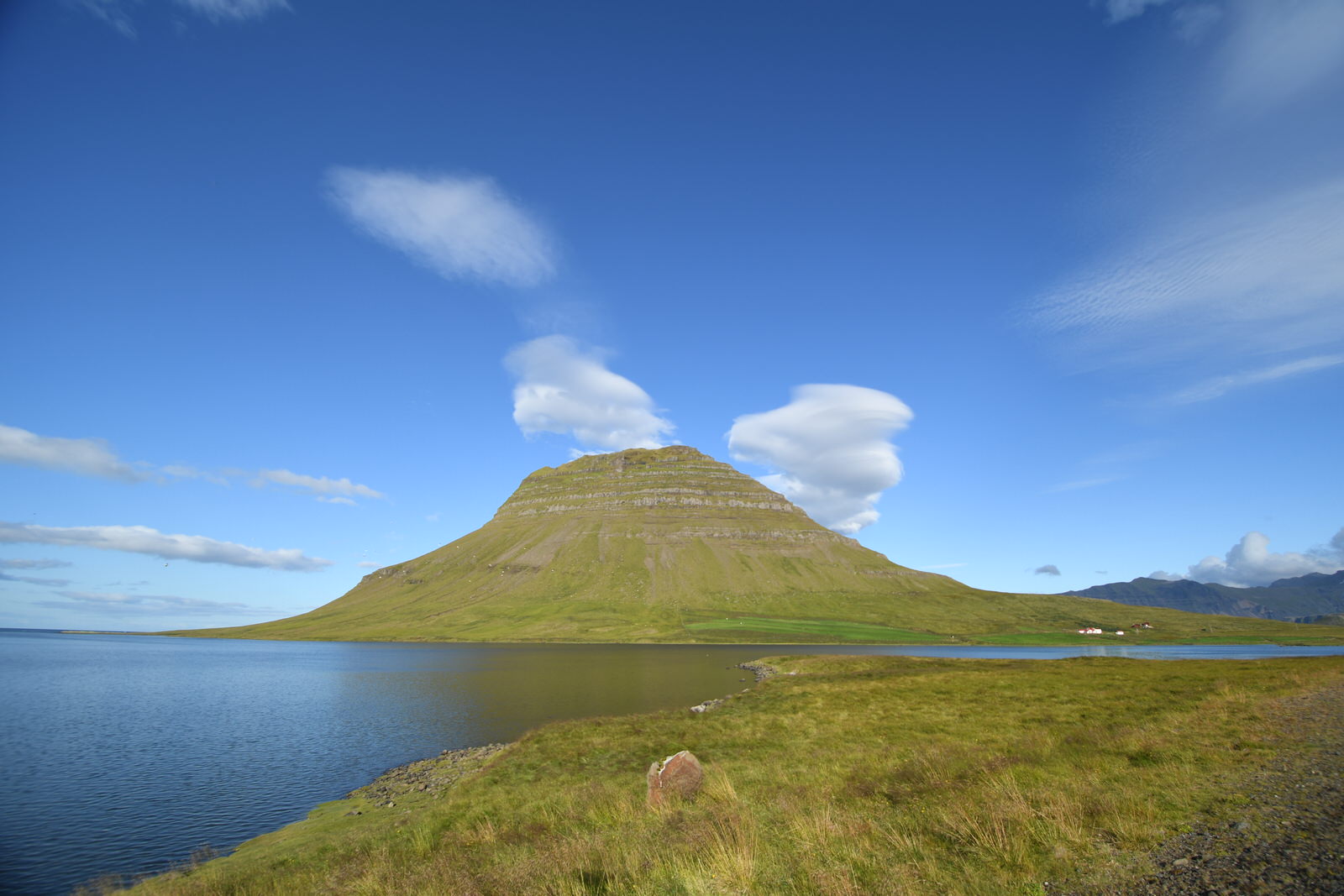
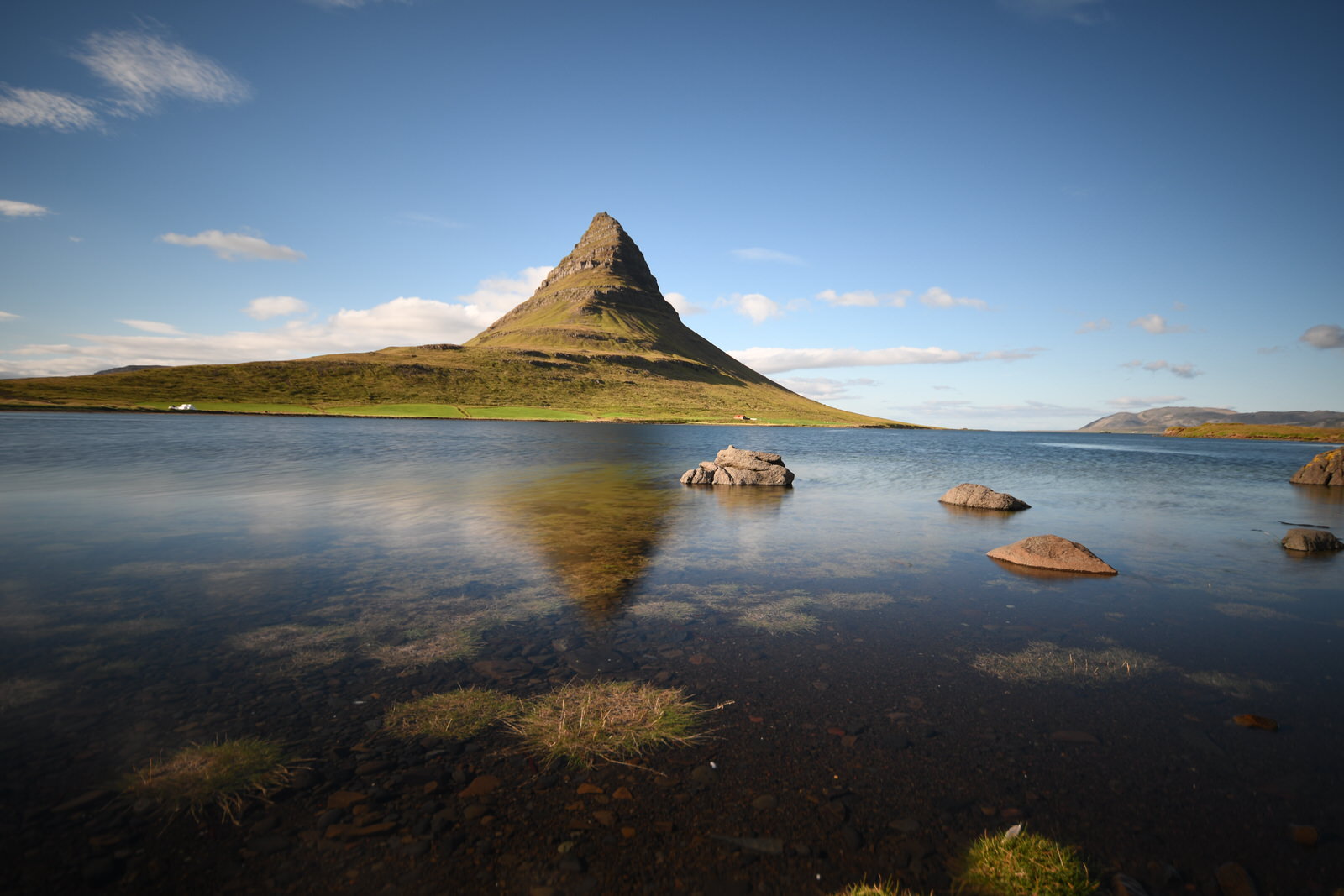
Day 3 : Hraunfossar & Barnafoss Waterfalls
On our third day in Iceland we decided to explore the region east of Borgarnes. We initially wanted to go to the Volgemir cave but had enough of the cave we had visited the day before. We spent quite a lot of time at the Hraunfossar and Barnafoss waterfalls, before picking up some tomatoes in Deildartunguhver (hot springs). We also stopped in Reykholt and visited its small little church.
We came earlier to Borgarnes and enjoyed a small walk in the center of the village, watching a football game and talking to locals.
Day 4 : Þingvellir, Geysir and Gullfoss
On our fourth day we had to drive to our second home camp in the south of the country (in Hvolsvöllur, in green on the map above). I had chosen to use this 200 km journey to stop at Geysir, Gullfoss and Bingvellir. We were fortunate enough to have an amazing weather. Rather than driving through the tunnel at Akarnes, we chose the route of the HvalfjördurfFjord which is wonderful. We stopped near the whale hunting station (closed in 2015) to take pictures of sheeps on the beach and would have liked to hike to Glymur (the second highest waterfall in Iceland) but were too short on time. However on Day 11 I had prepared a surprise to my family which brought us straight back to Glymur. Our first stop was at Þingvellir national park. If you know a bit of geology, Þingvellir is really an impressive place which offers strong contrasts and amazing views (especially from above which we got on Day 11). The road through the natural reserve is also worthwhile. I could have stopped every 500 meters to take pictures.
From there we drove to Geysir, which was crowded. Seeing a geyser for the first time was a once-in-a-lifetime experience and despite the crowd it can’t be missed. As a photographer however you can wonder what kind of picture you can take that hasn’t already been taken a million time. The next stop after Geysir was Gullfoss. Here we just followed the crowds of tourists. The Gullfoss waterfalls are indeed very impressive. It didn’t inspire me however for my photography practice. From Gullfoss we took the road 30 to go to Fludir. The “road” was under maintenance and no fun to drive onto. After this long journey we arrived at around 6pm in Hvolsvöllur.
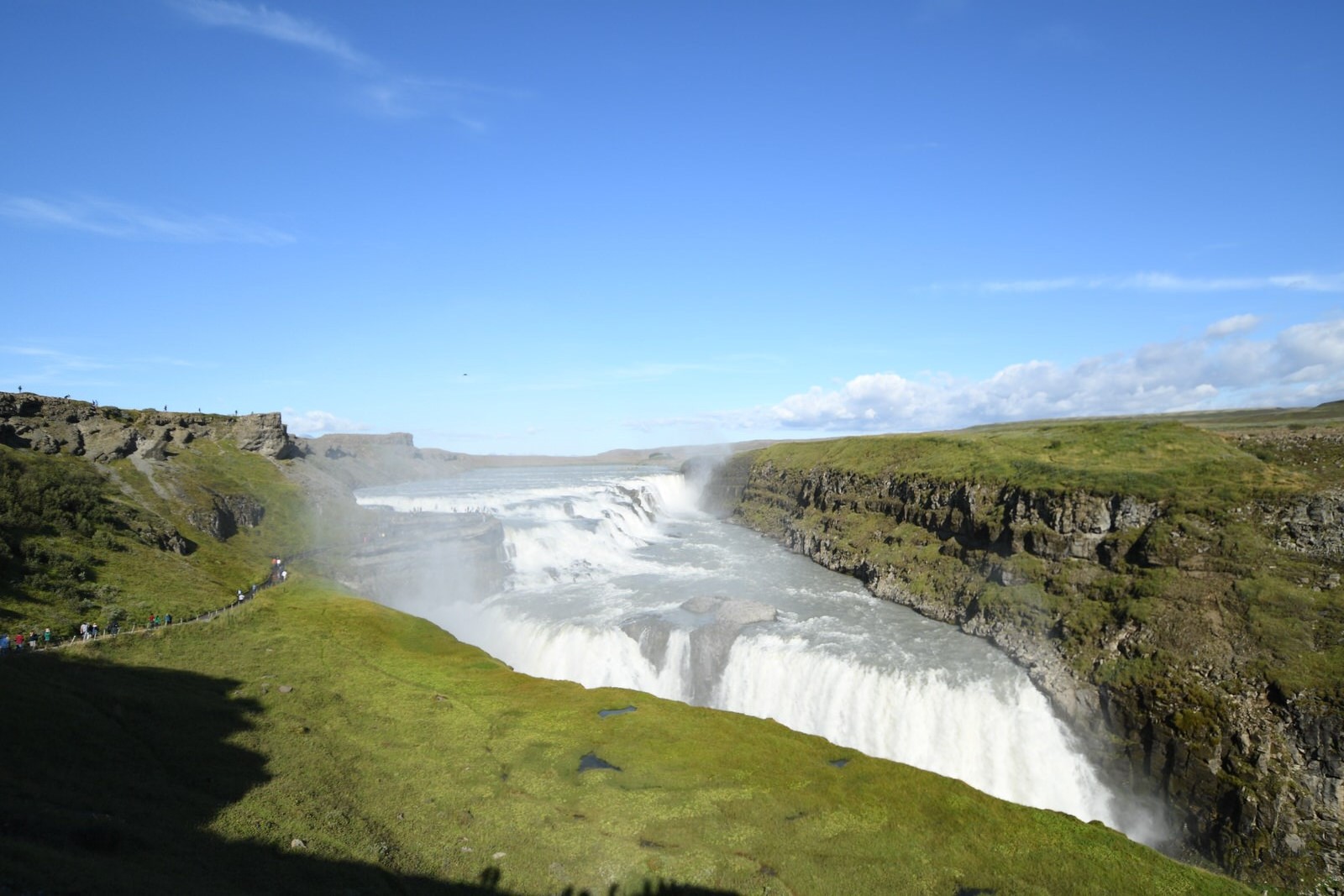
Day 5 : more waterfalls ! Skogafoss, Seljalandsfoss and Dyrhólaey
Our first day in southern Iceland was dedicated to the discovery of 3 of the most famous gems this coast has to offer: the waterfalls of Seljalandsfoss and Skogafoss, and further towards the East the view from Dyrhólaey.
I captured some interesting views of Seljalandsfoss with my grey filter (see below) which somewhat differ from what you usually see on the internet. Most pictures of Seljalandsfoss are indeed either from behind the waterfalls or in height. I found out that you could get quite an interesting perspective from the river.
When we arrived in Skogafoss the weather was just perfect: clear sky and sunshine. A rainbow could be seen in the waterfall itself which allowed me to capture some other good moments with my grey filter.
After Skogafoss I brought the family to Dyrhólaey were only a handful tourists could be seen. The wind up there was terrible (probably around 80-90 km/h) which prevented me to approach the cliff. Nevertheless I was able to take good pictures were a threatening sky in the foreground alternated with a clear sky on the background. Iceland must be seen for those beautiful contrasts of lights.
On the way back we stopped at Solheimajökull and approached the glacier. There we could see how transparent the ice is.
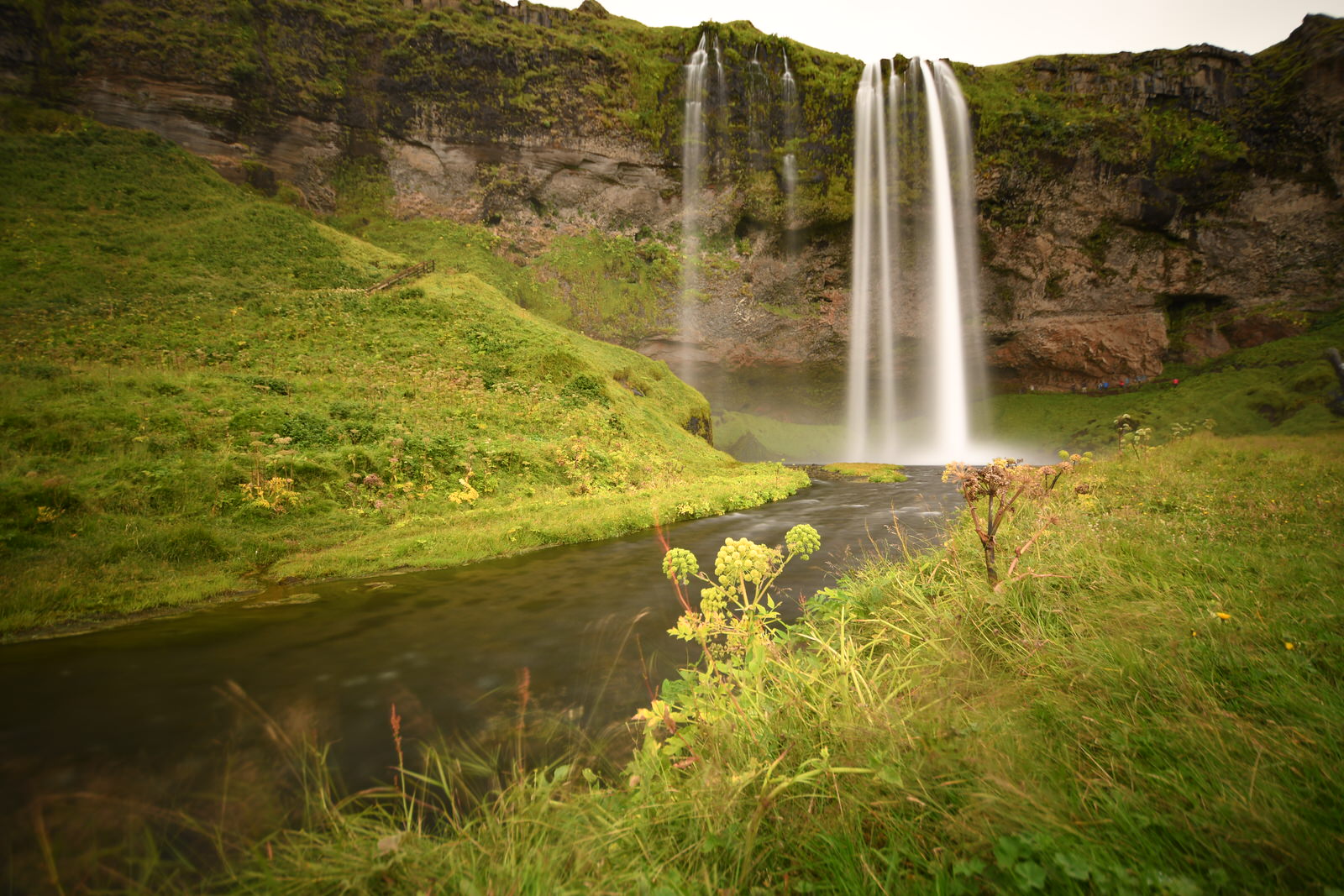
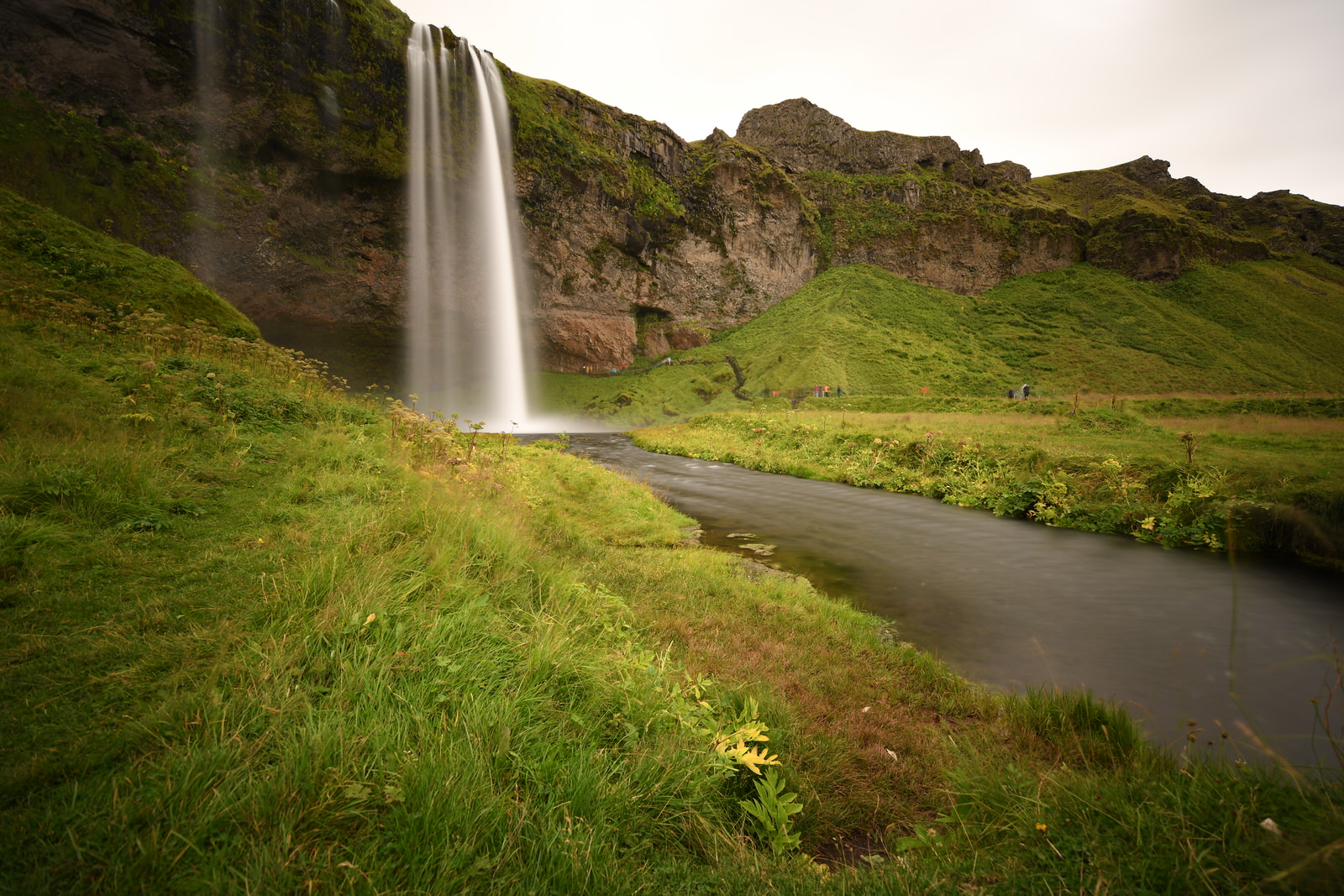
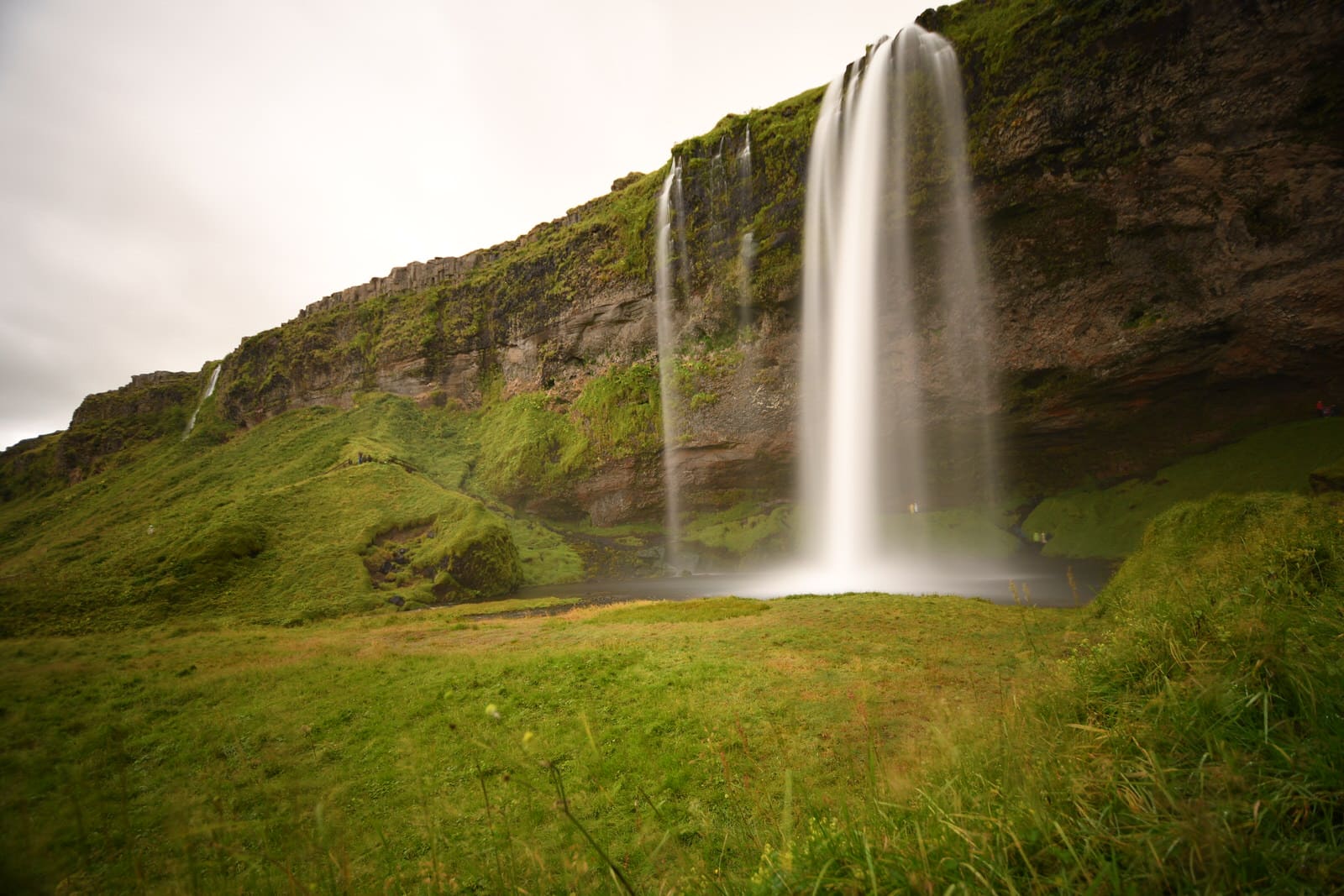
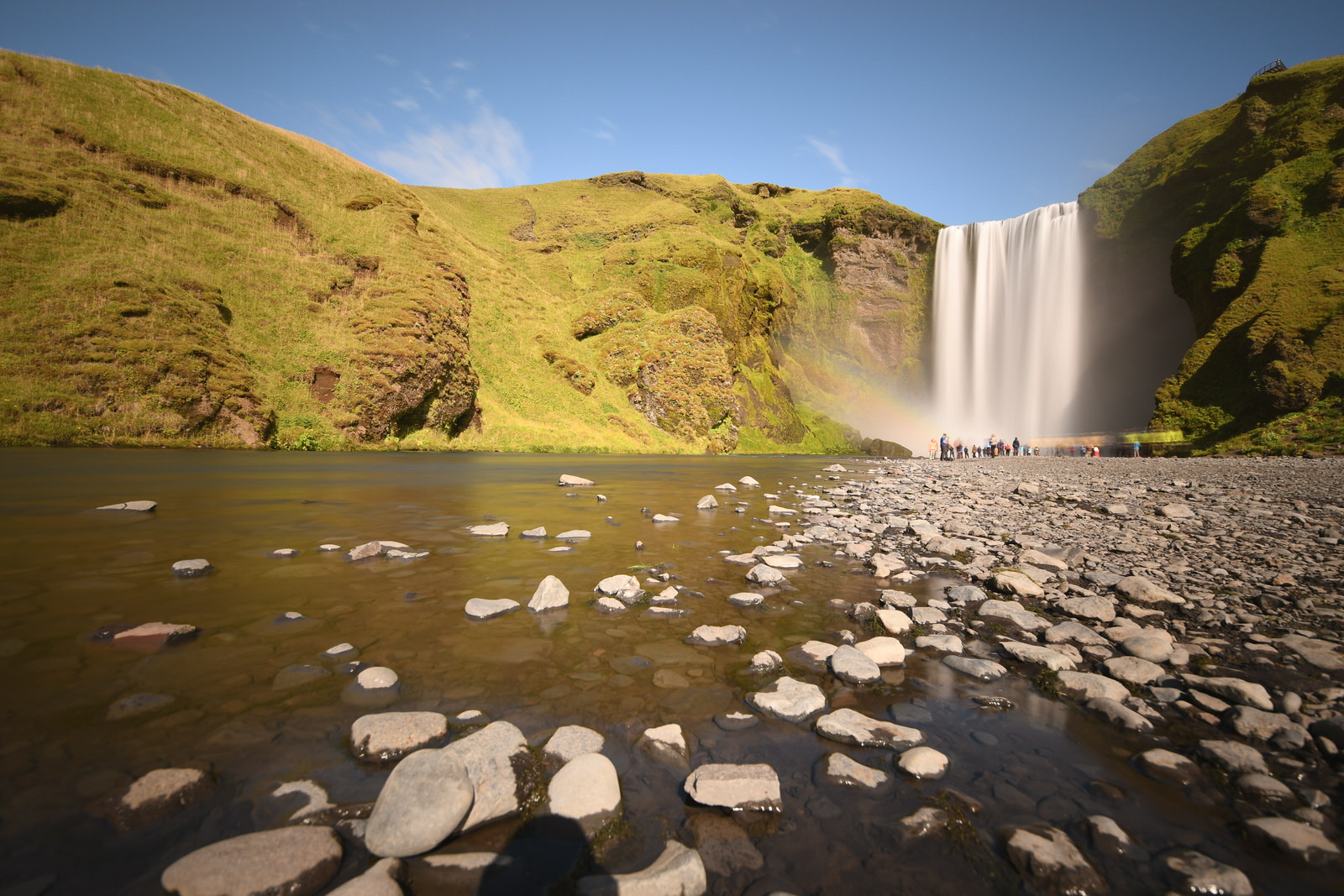
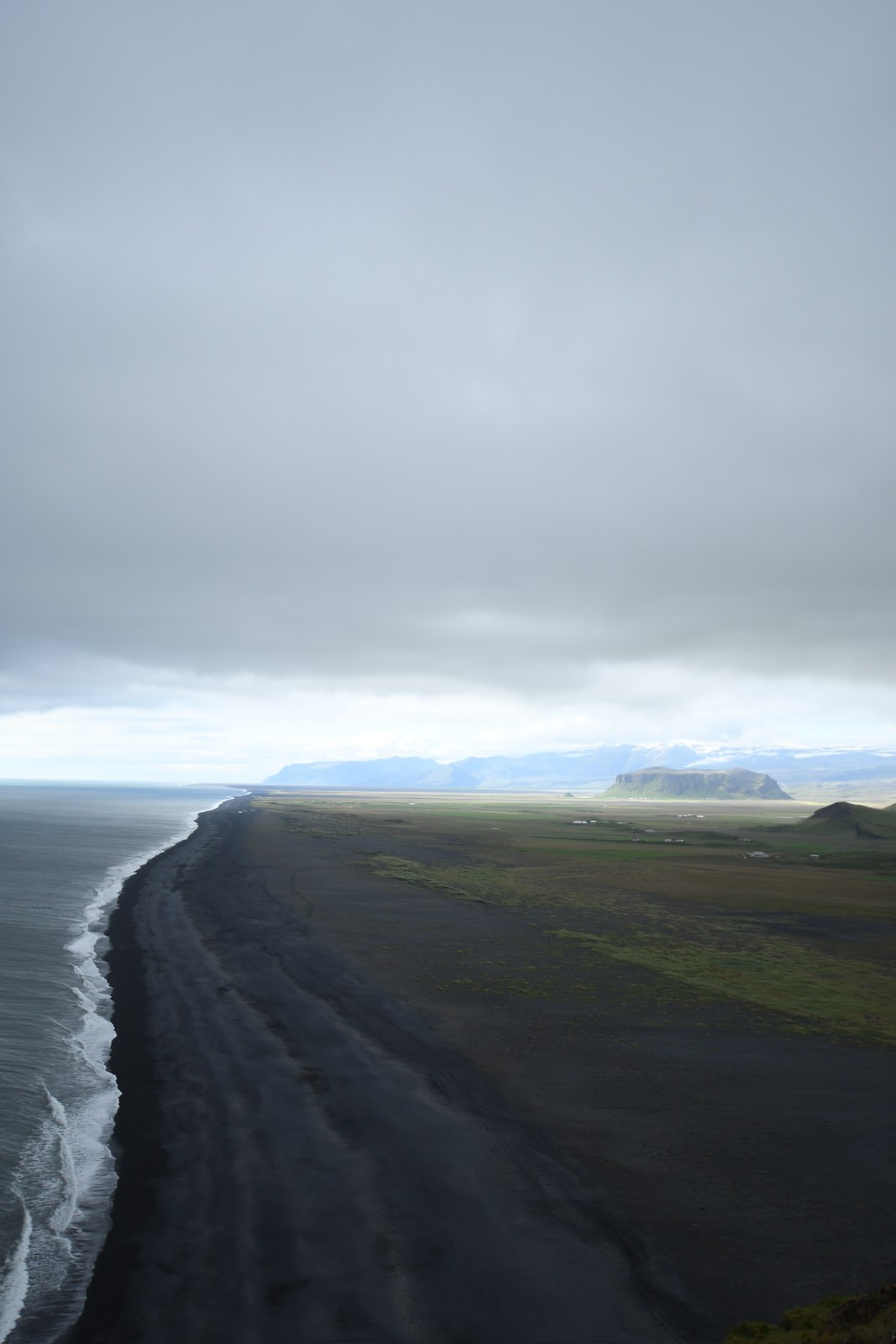
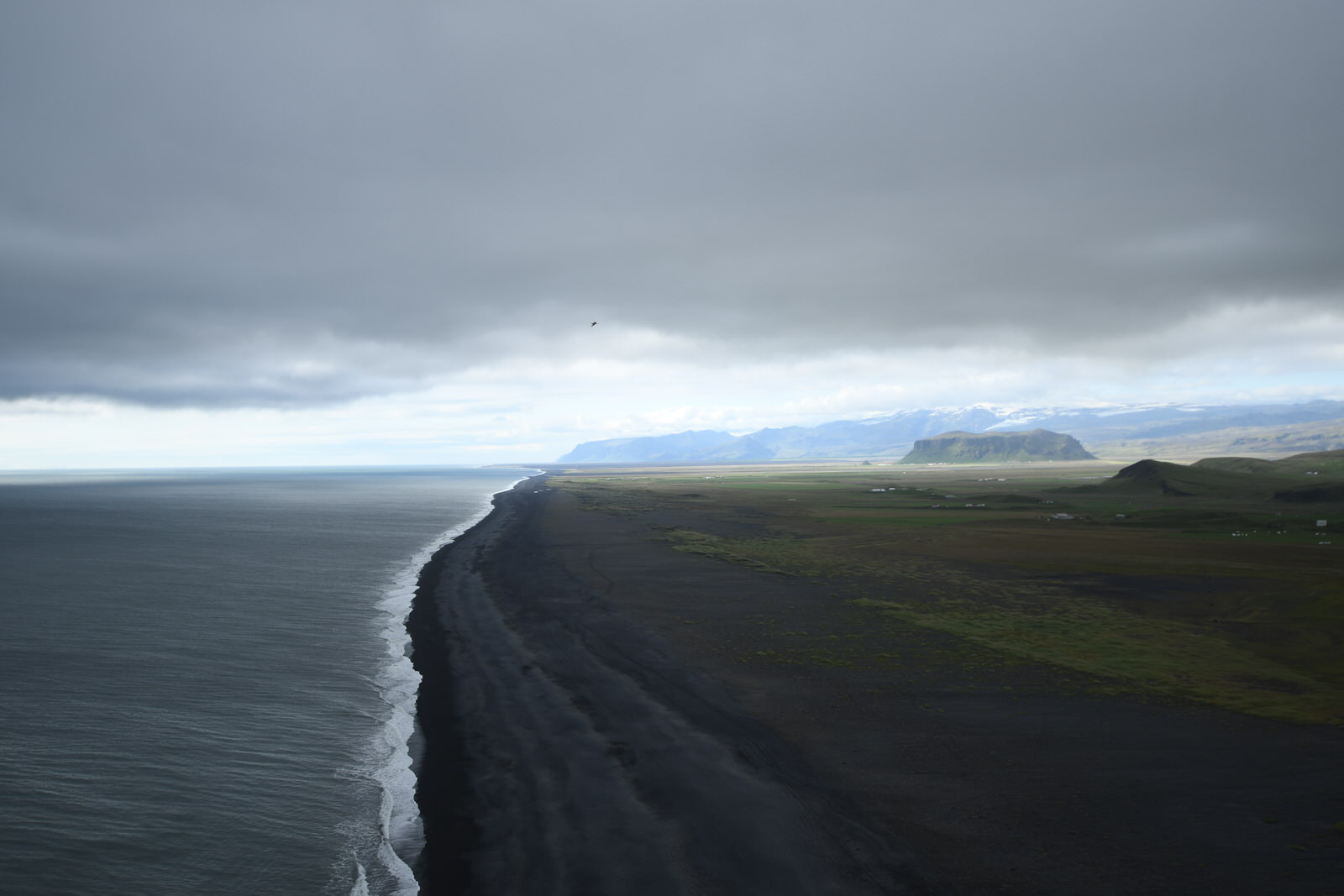
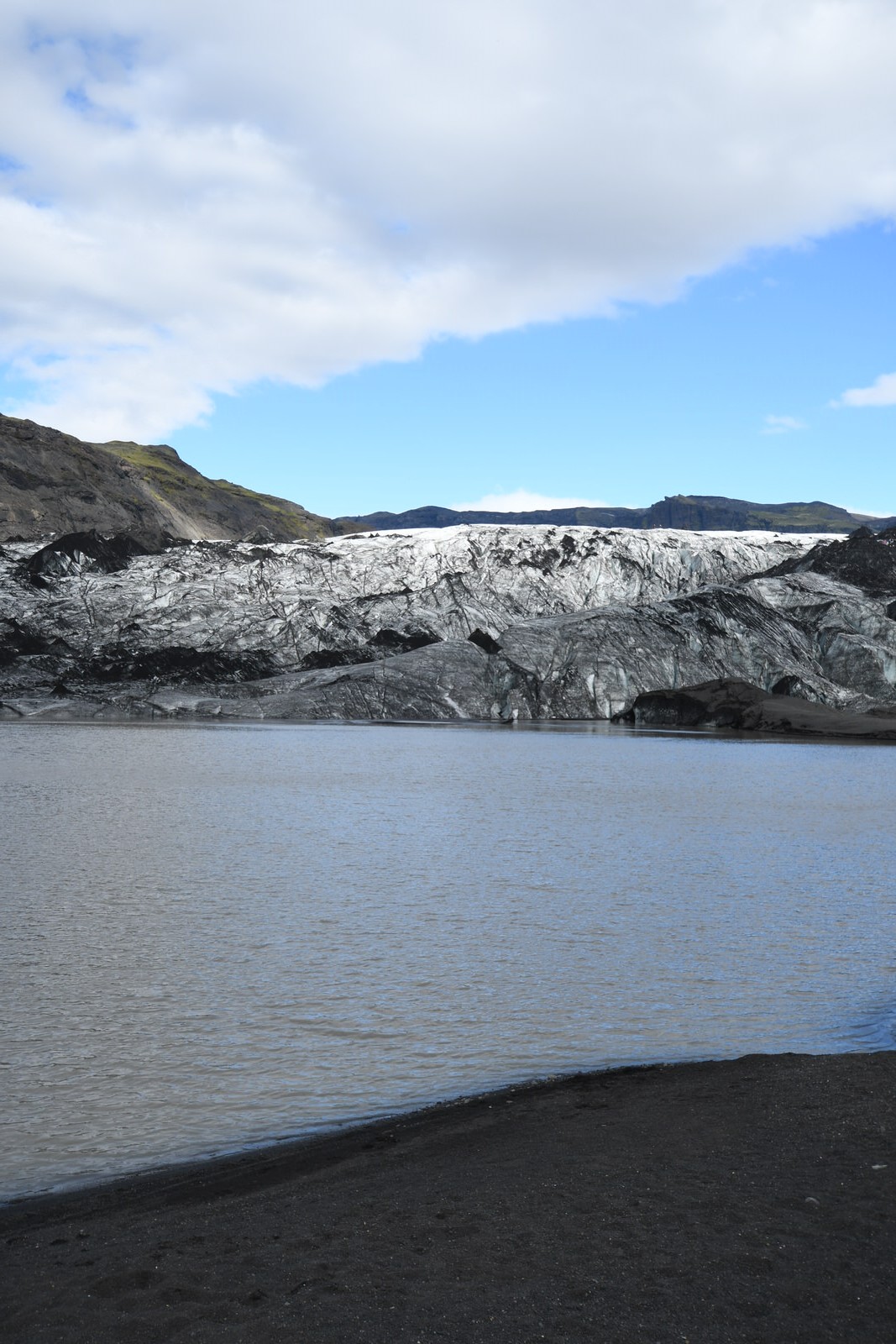
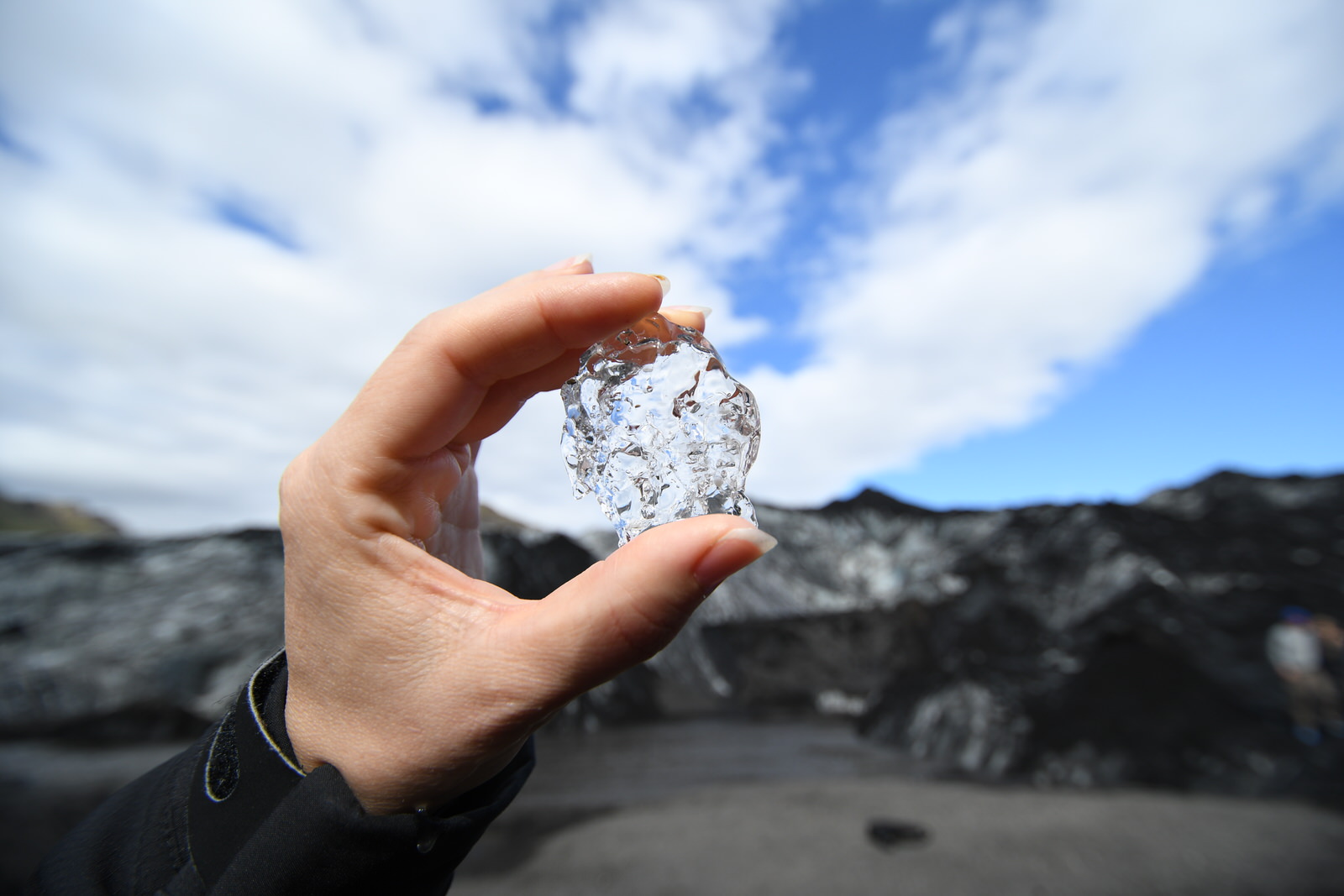
Day 6 : geothermal pool
On Day 6 we returned to Gullfoss to get closer to the waterfall and see whether I’d get more inspiration (which I didn’t).
We went back through Fludír and stopped at the secret lagoon, a geothermal pool with a small geyser in the backyard. It’s less crowded than the blue lagoon (much smaller also) and definitely more affordable.
Day 7 : the Suðurland highlands (Markarfljótsgljúfur)
On Day 7 we hired a local guide to go to hidden places in the highlands. The best road we took was a F-road. Otherwise it was off-roads through the mountains. What an experience ! We didn’t meet any other human in the first 4 hours of the trip in the Suðurland region. In total we saw 5 or 6 vehicles. The peak moment of the day was certainly when we stopped at Markarfljótsgljúfur, a 200 meter deep canyon. What struck me most was the contrast between poor black volcanic soils and the rich “oasis” of greenness that emerged as soon as water was there. It ensures some amazing contrasts that I tried to capture in pictures.
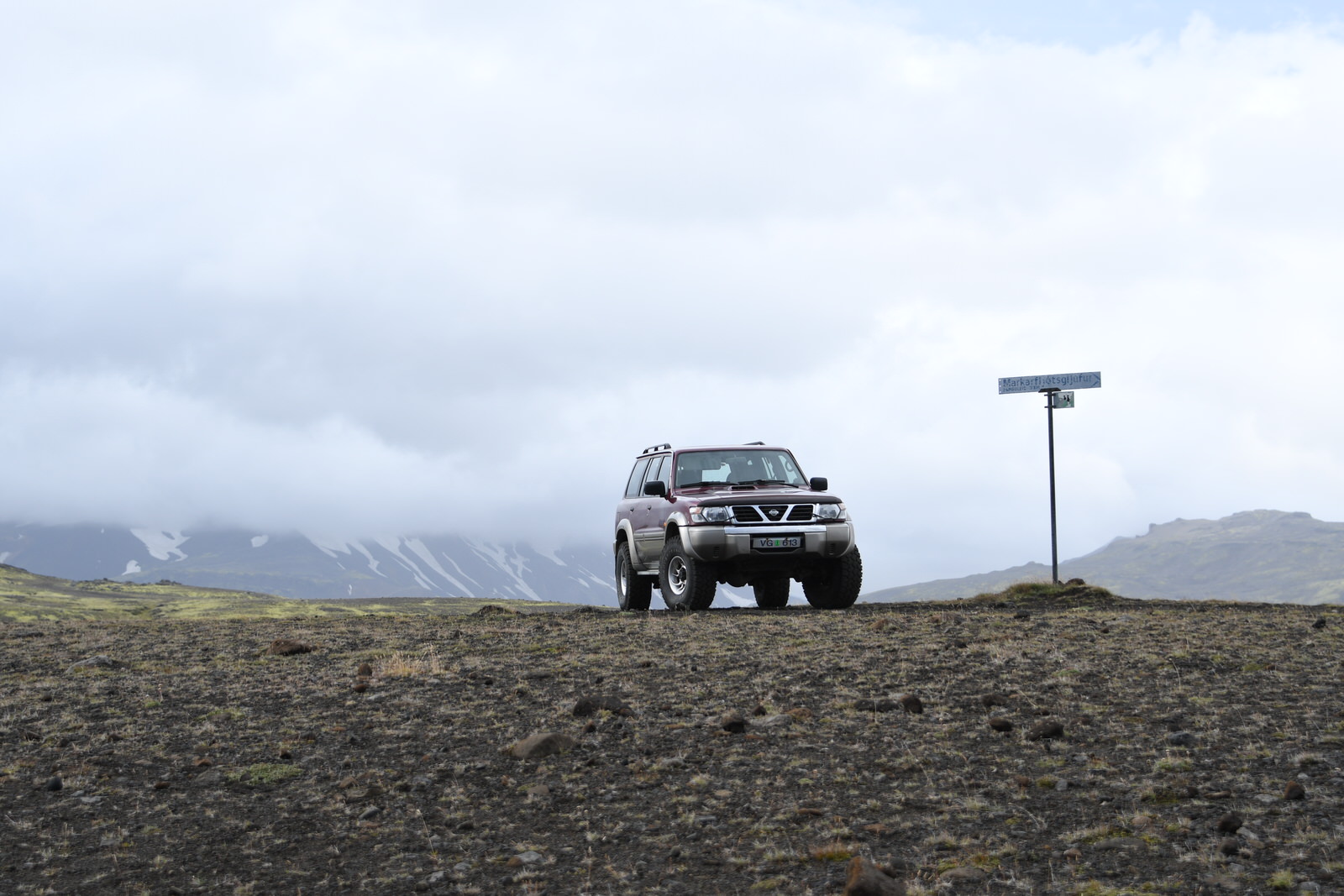
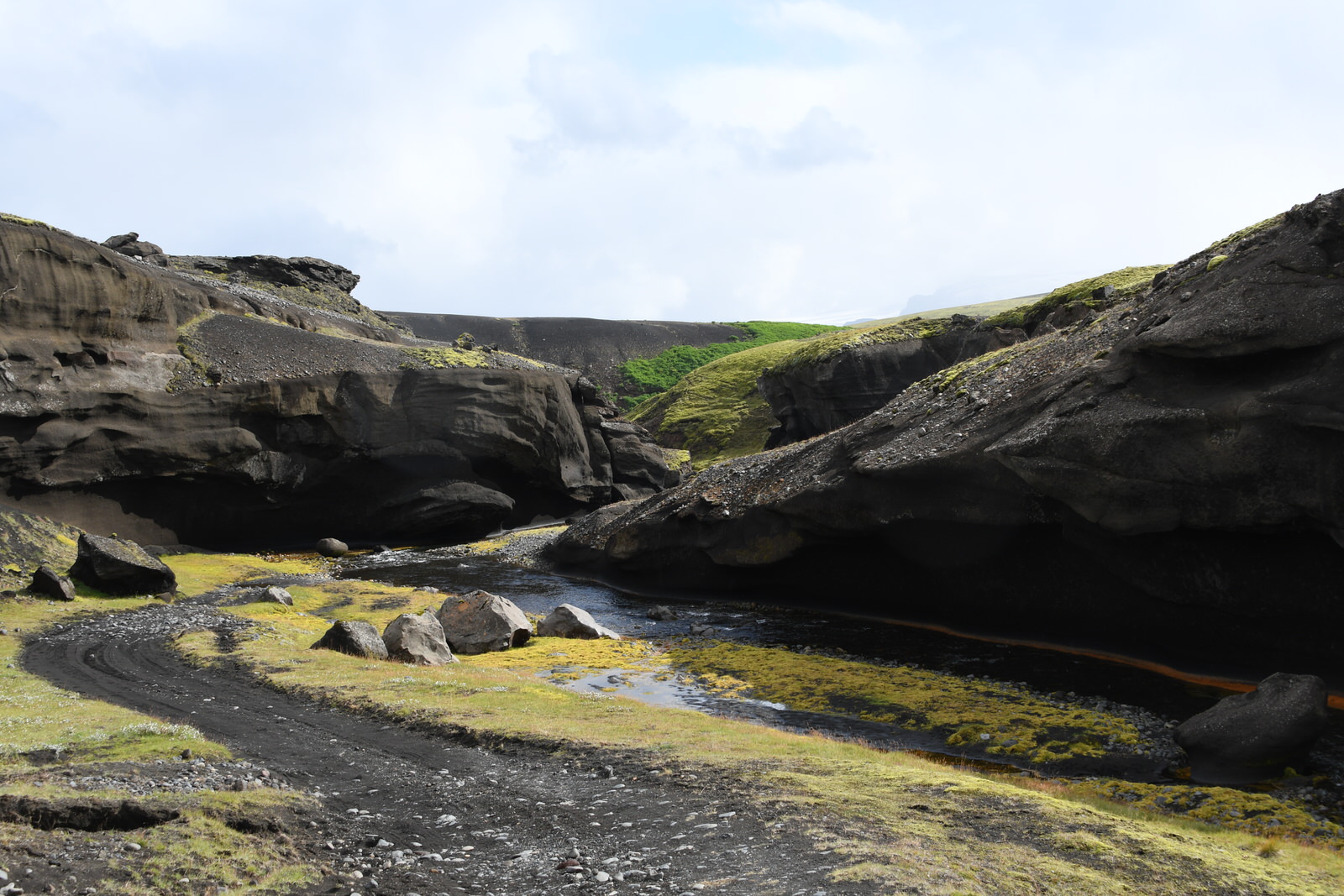
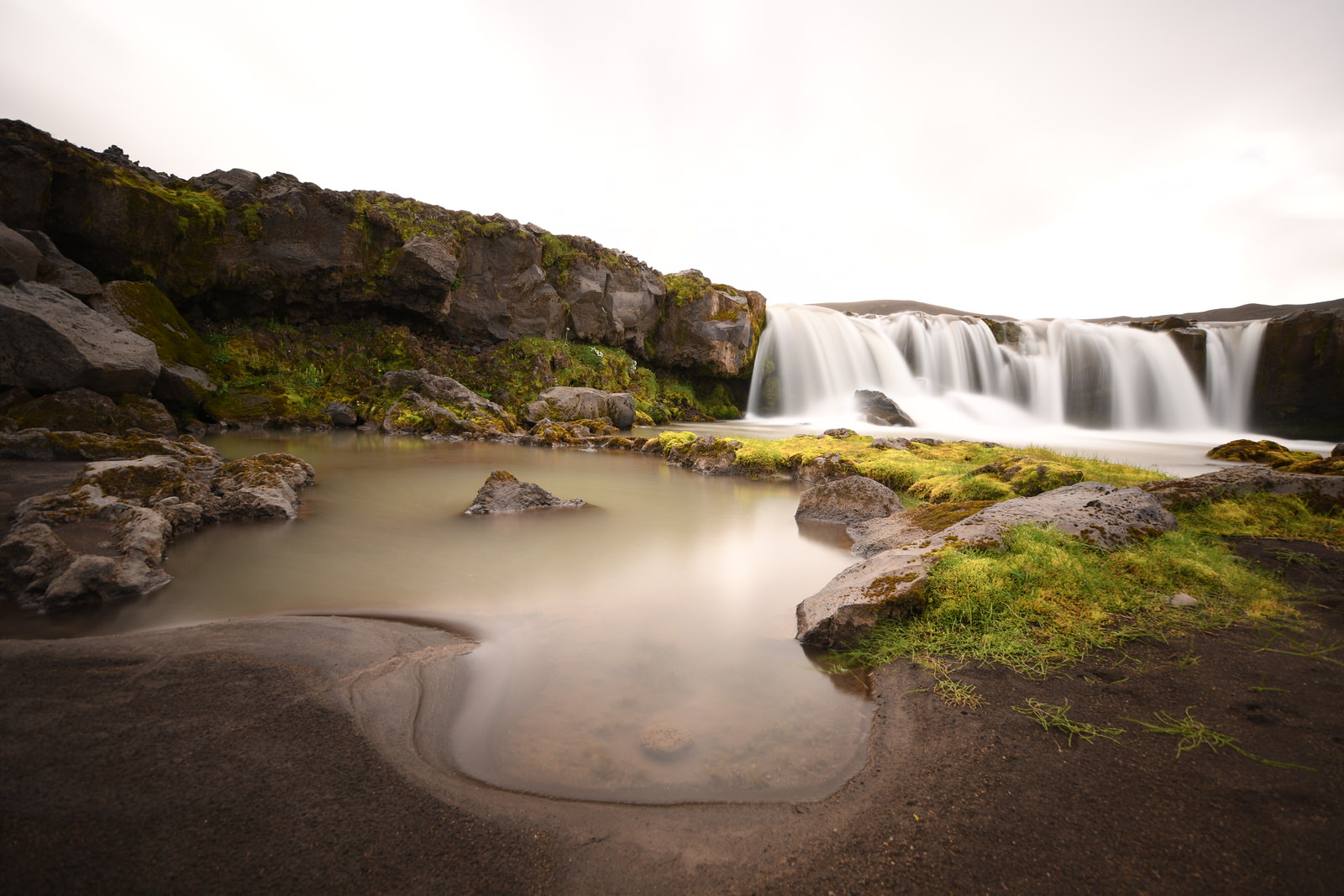
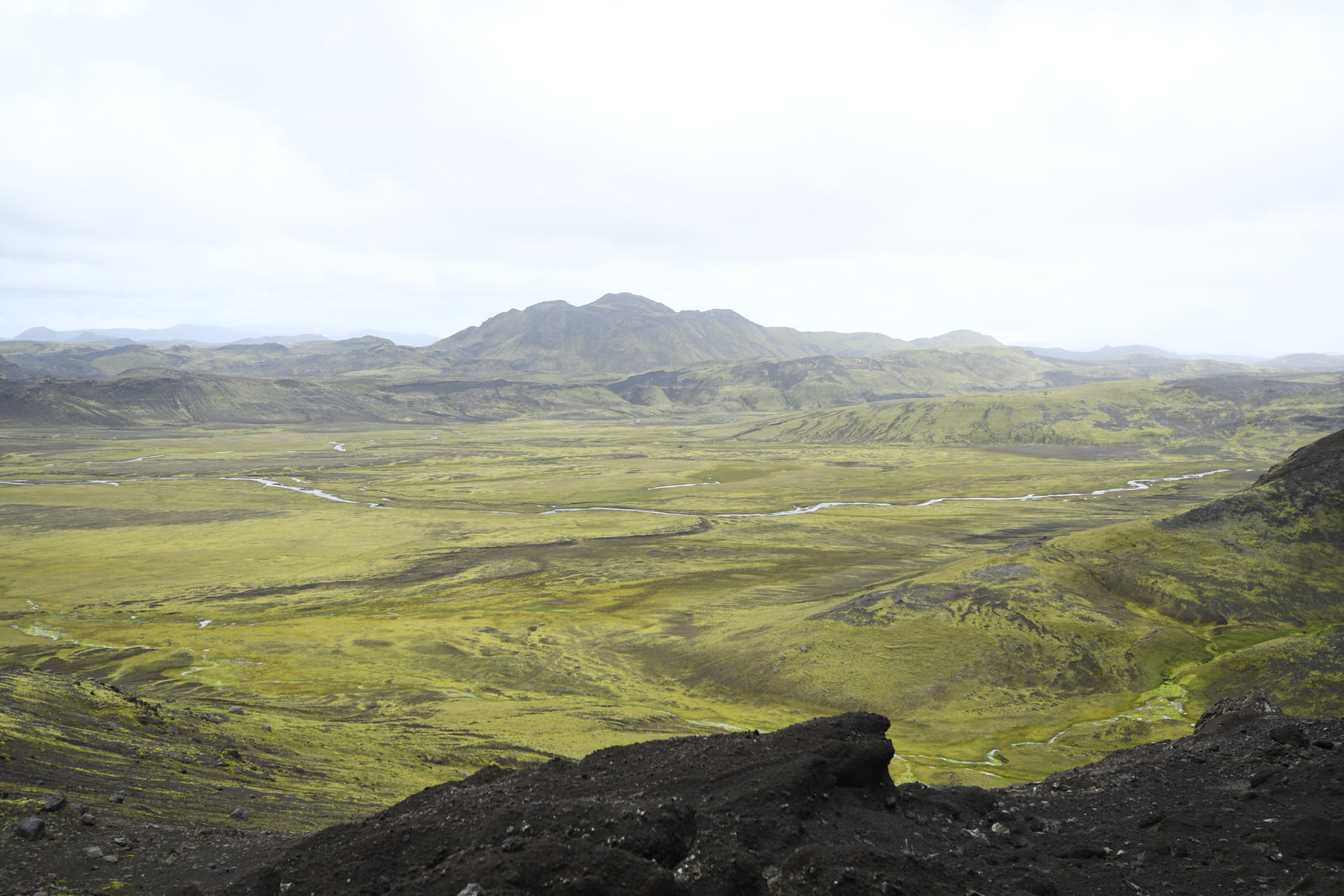
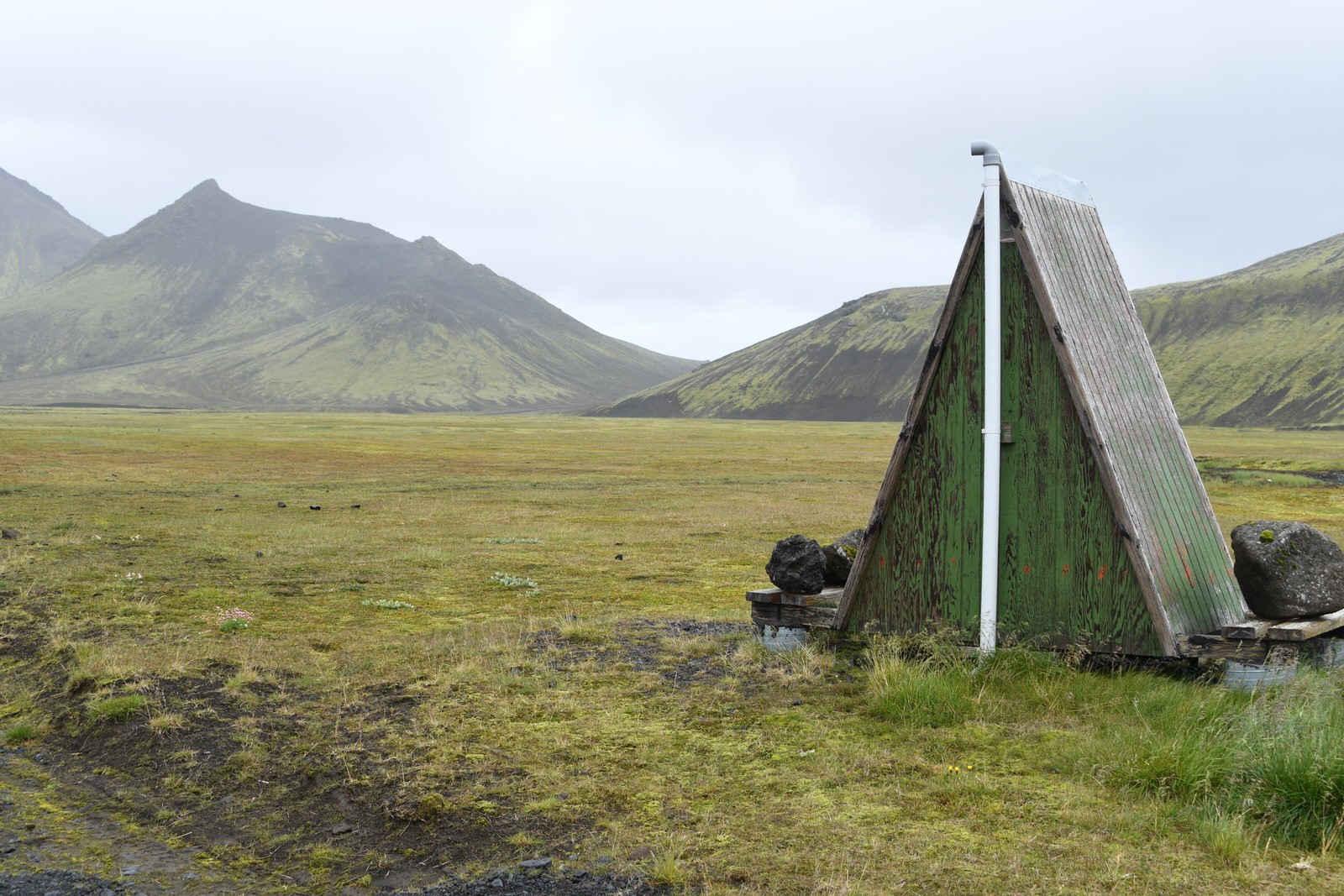
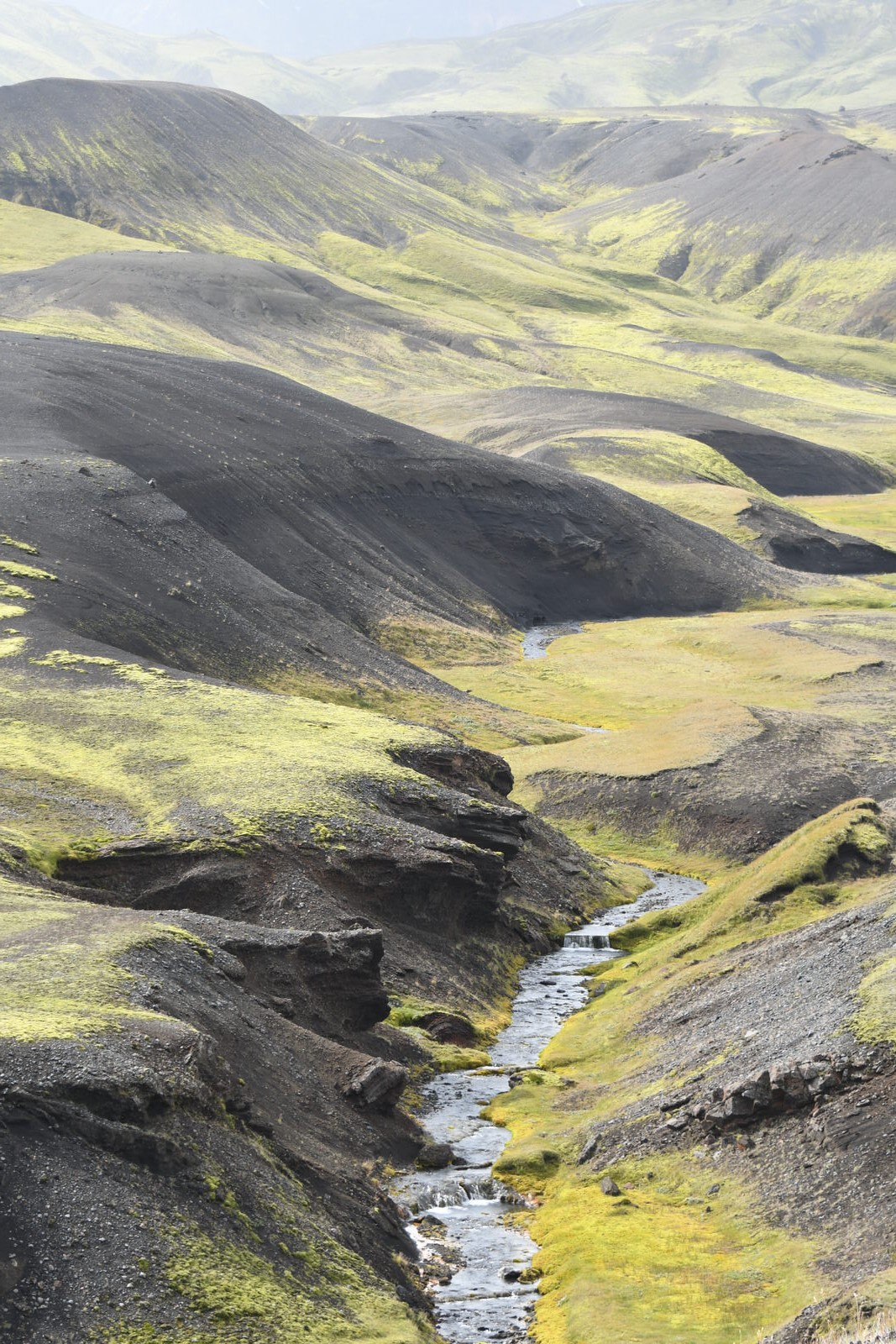
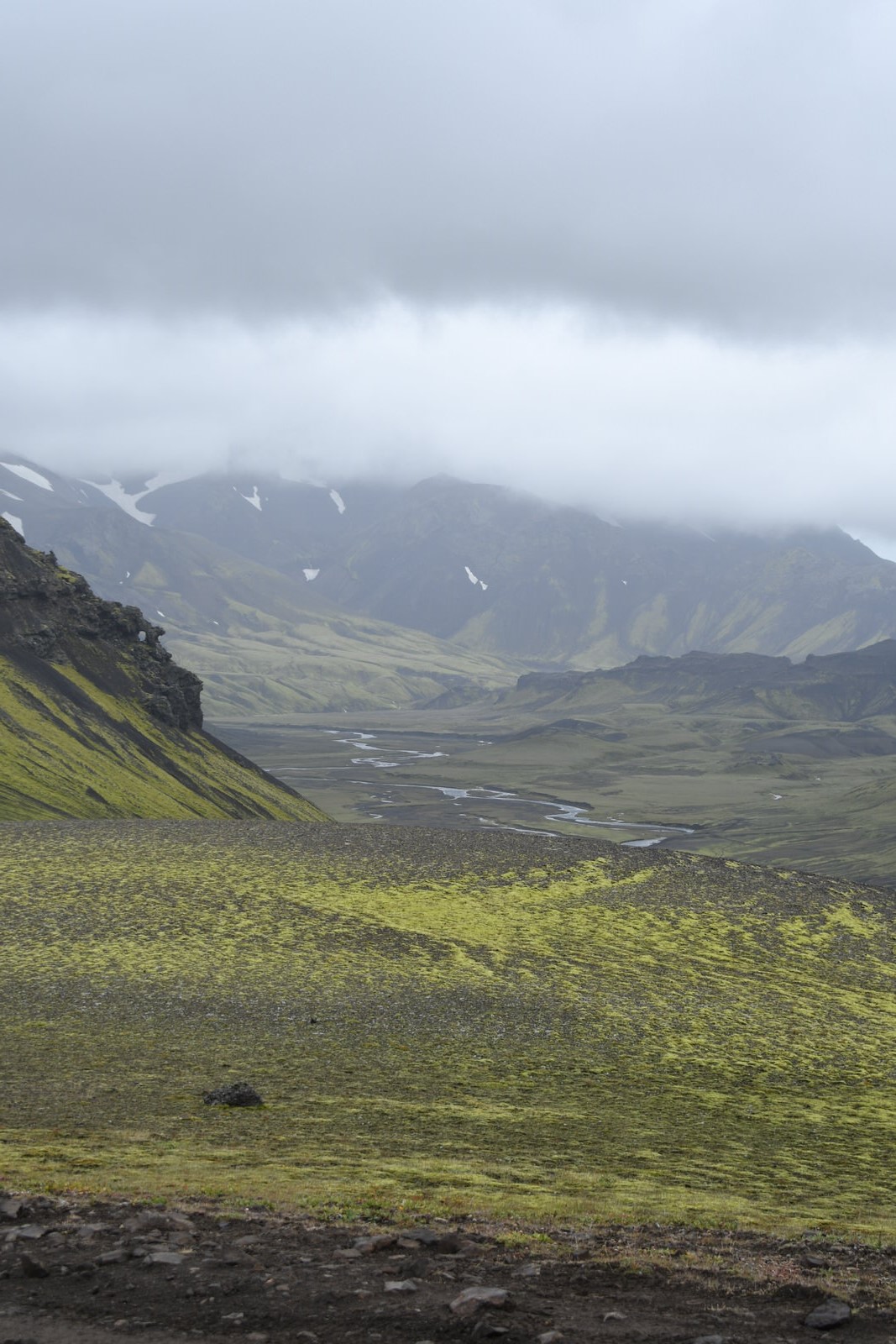
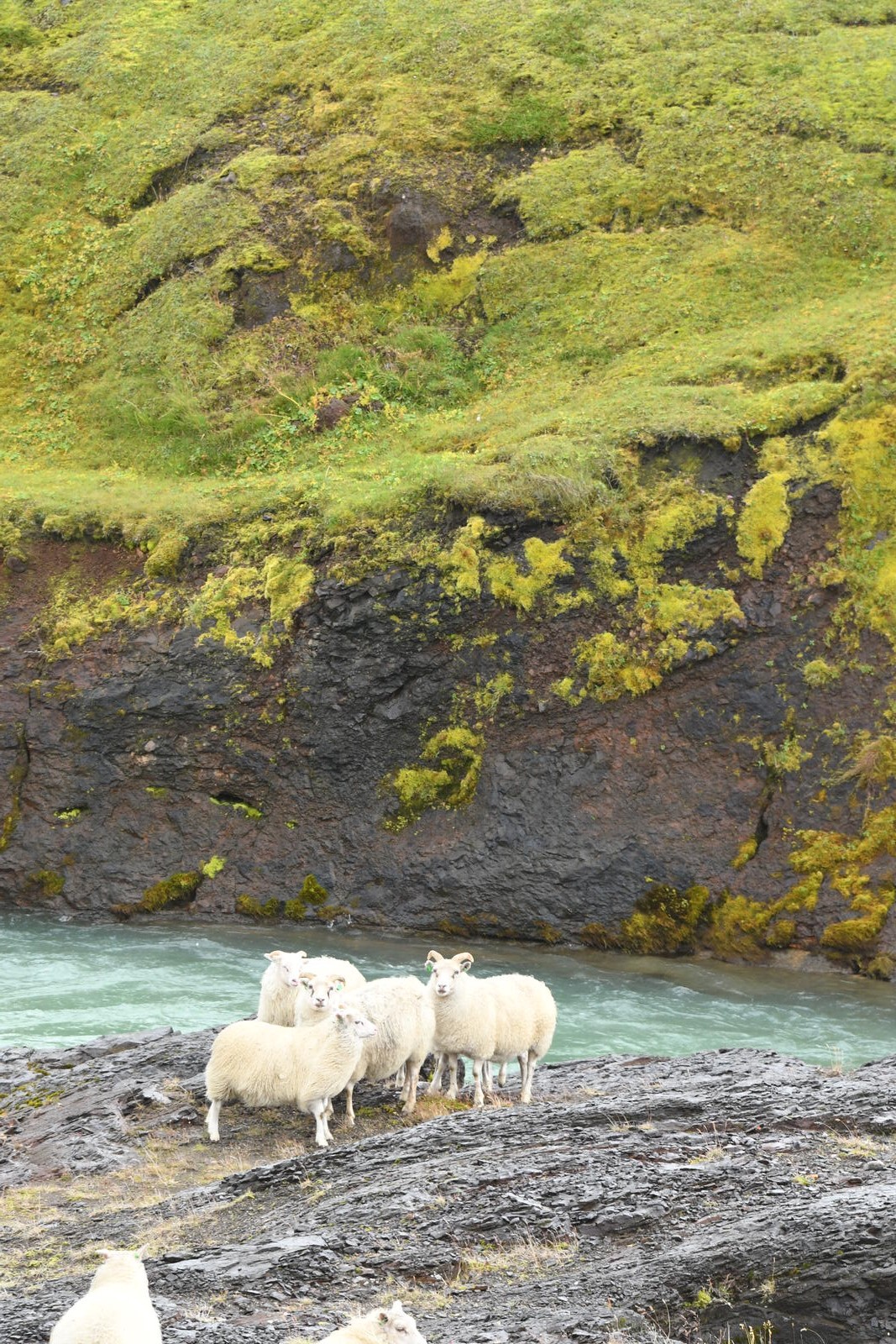
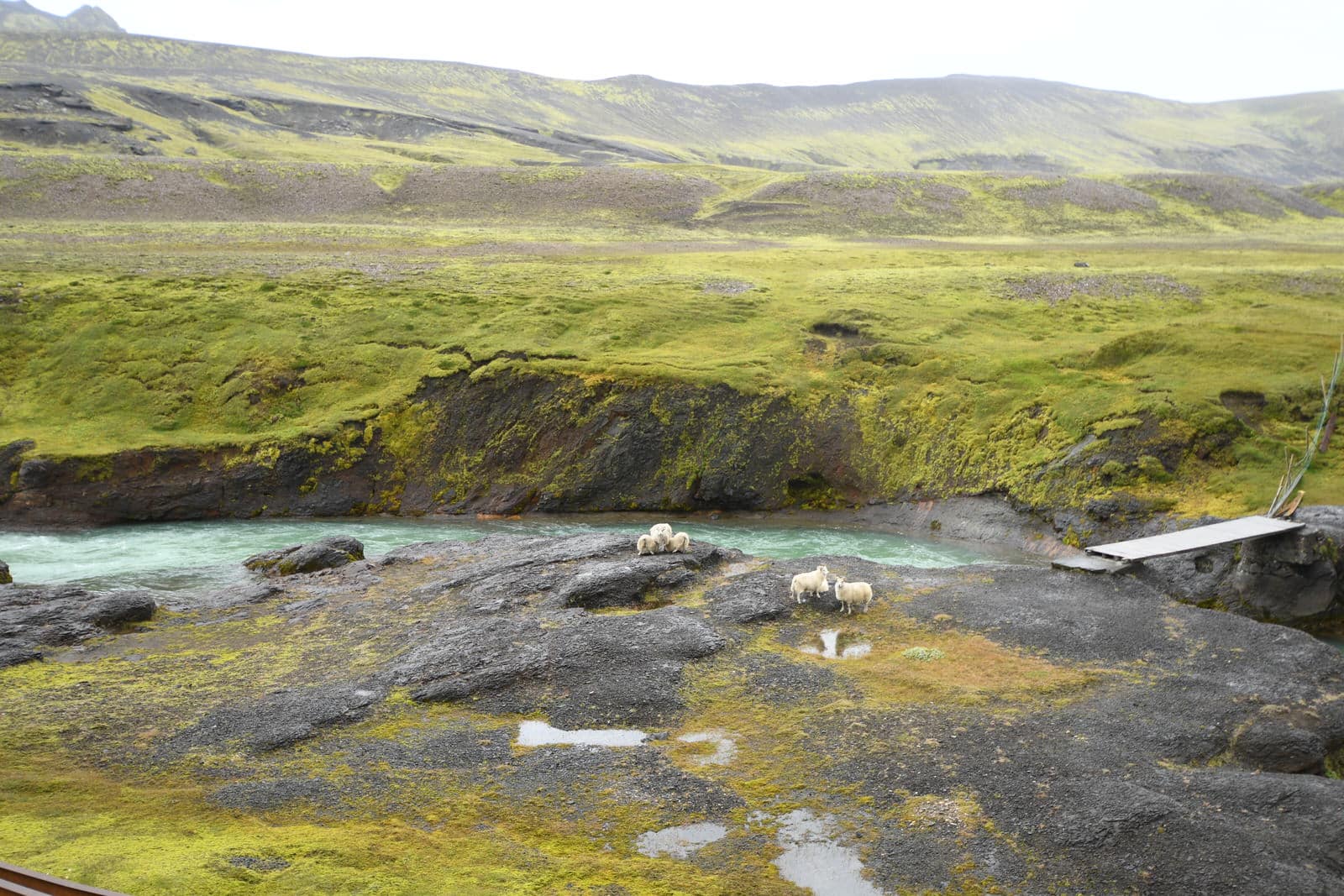
Day 8 : The Vestmann Islands
The Vestmann islands are easy to reach by boat (35 minutes only). The weather on the Vestmann islands is often very windy and I had waited until the last moment to decide on the day of the visit. The least I can say is that this precaution paid off. We had clear sky, sun and 19 degrees (which is pretty exceptional). We climbed the volcano, took a speed boat tour of the island with ribsafari (what an amazing experience !) and spent the last hours watching the views and reconstructing in our minds the explosion of 1973.
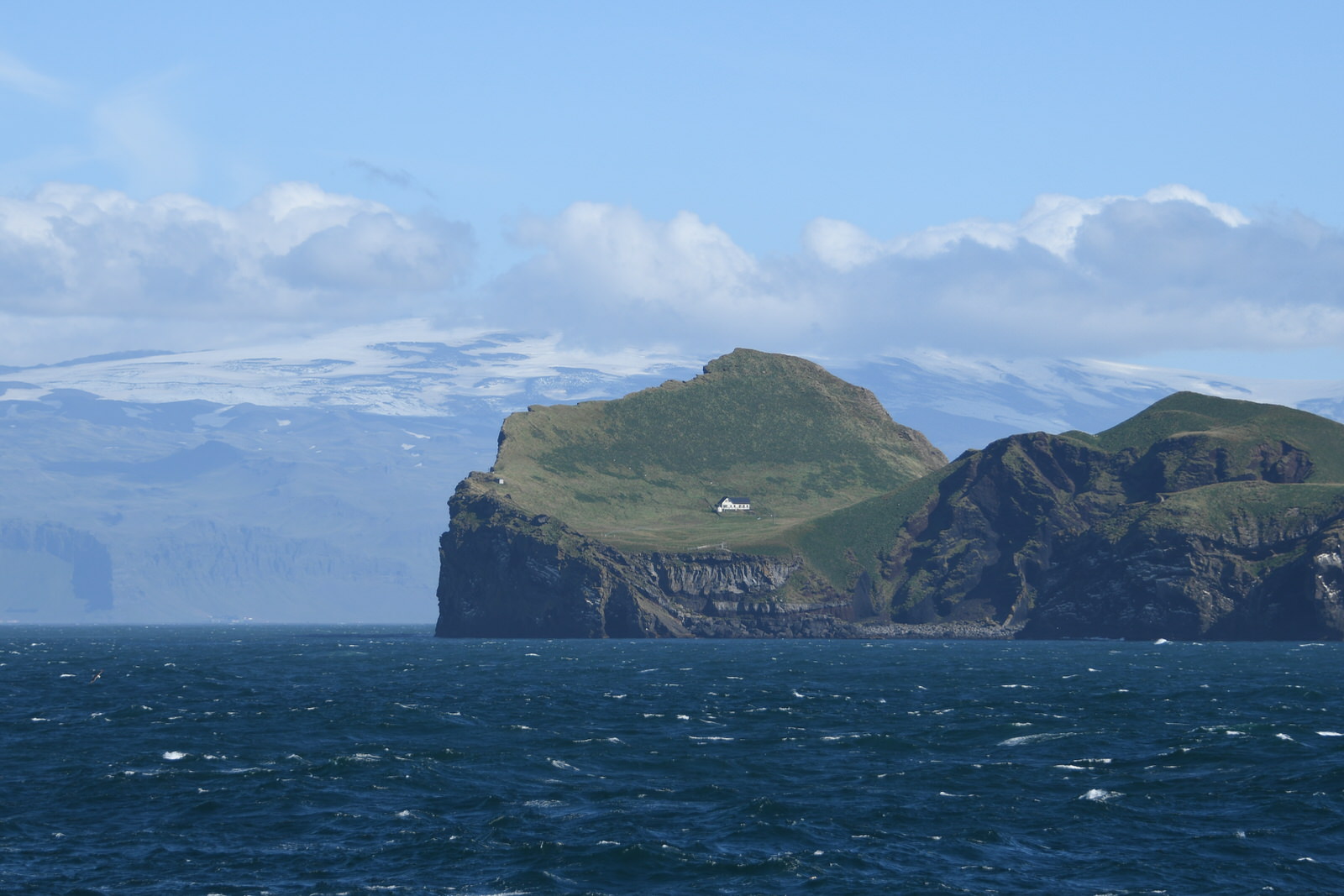
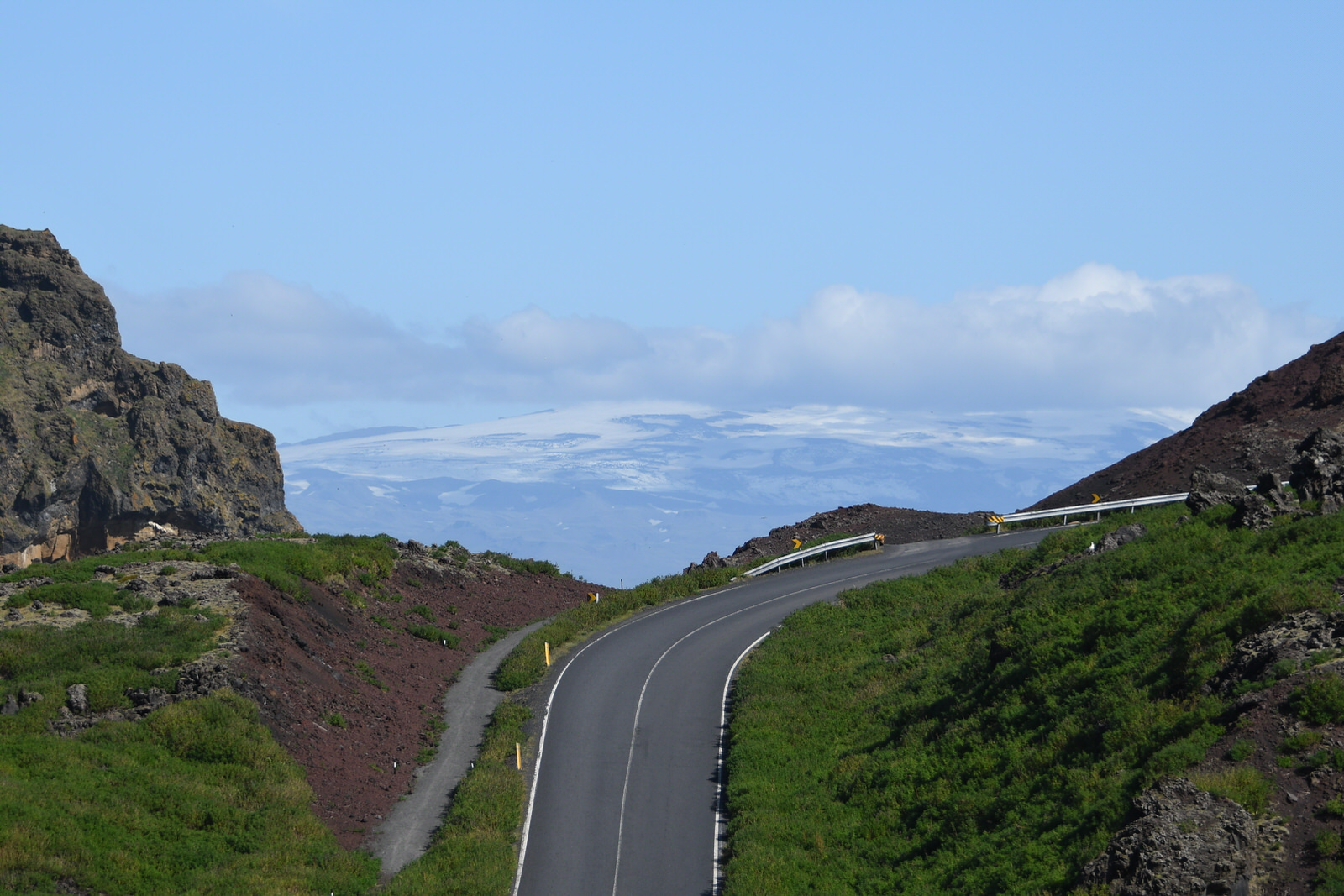
Day 9 : the glacier lagoon at Jökulsárlón
Reaching the glacier lagoon from Hvolsvöllur took us 3 1/2 hours (300 km) but road one is easy to drive and offers wonderful views on glaciers. The spectacle that awaits you in Jökulsárlón can hardly be described with words. You have to see by yourself those magical icebergs floating slowly to the ocean.
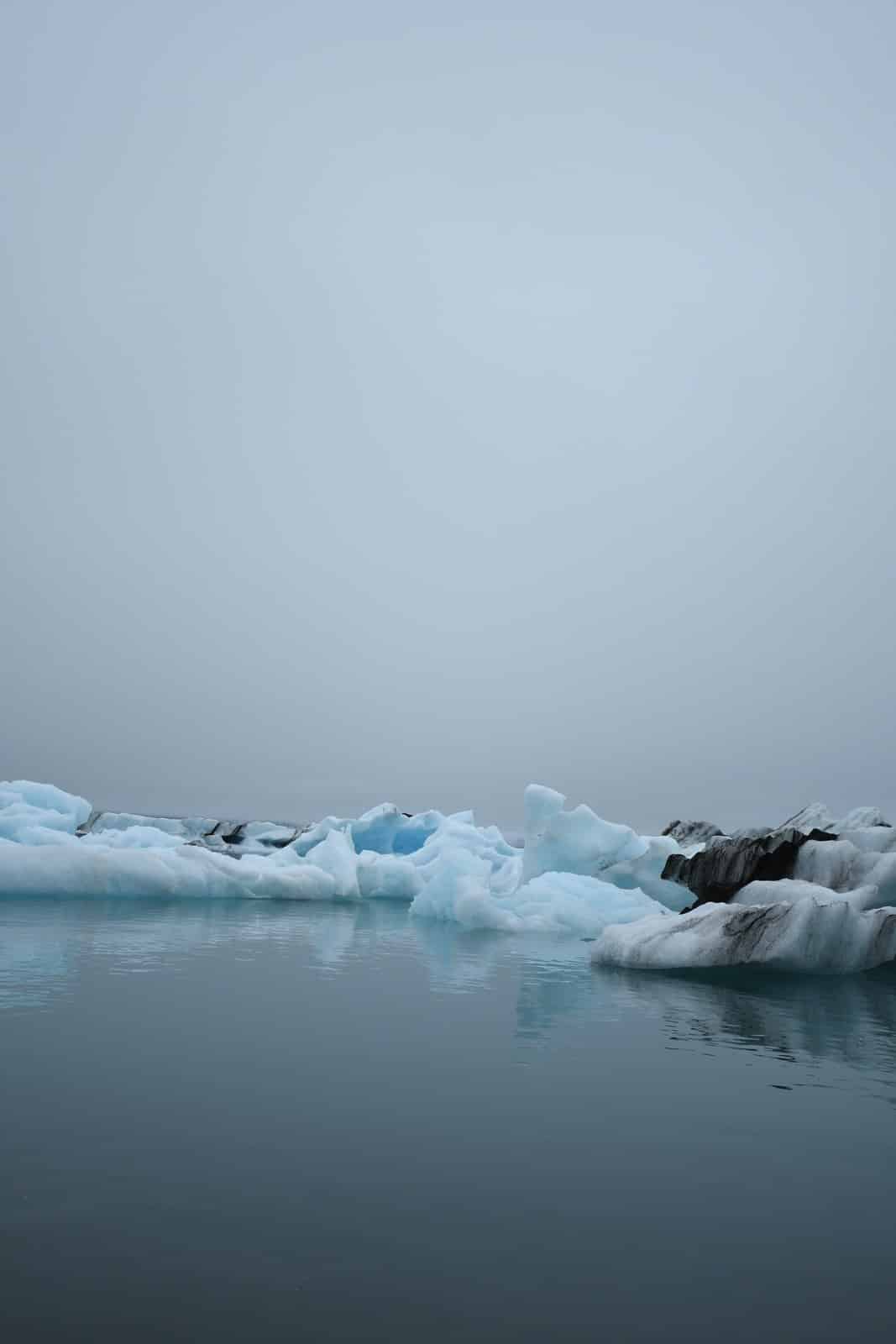
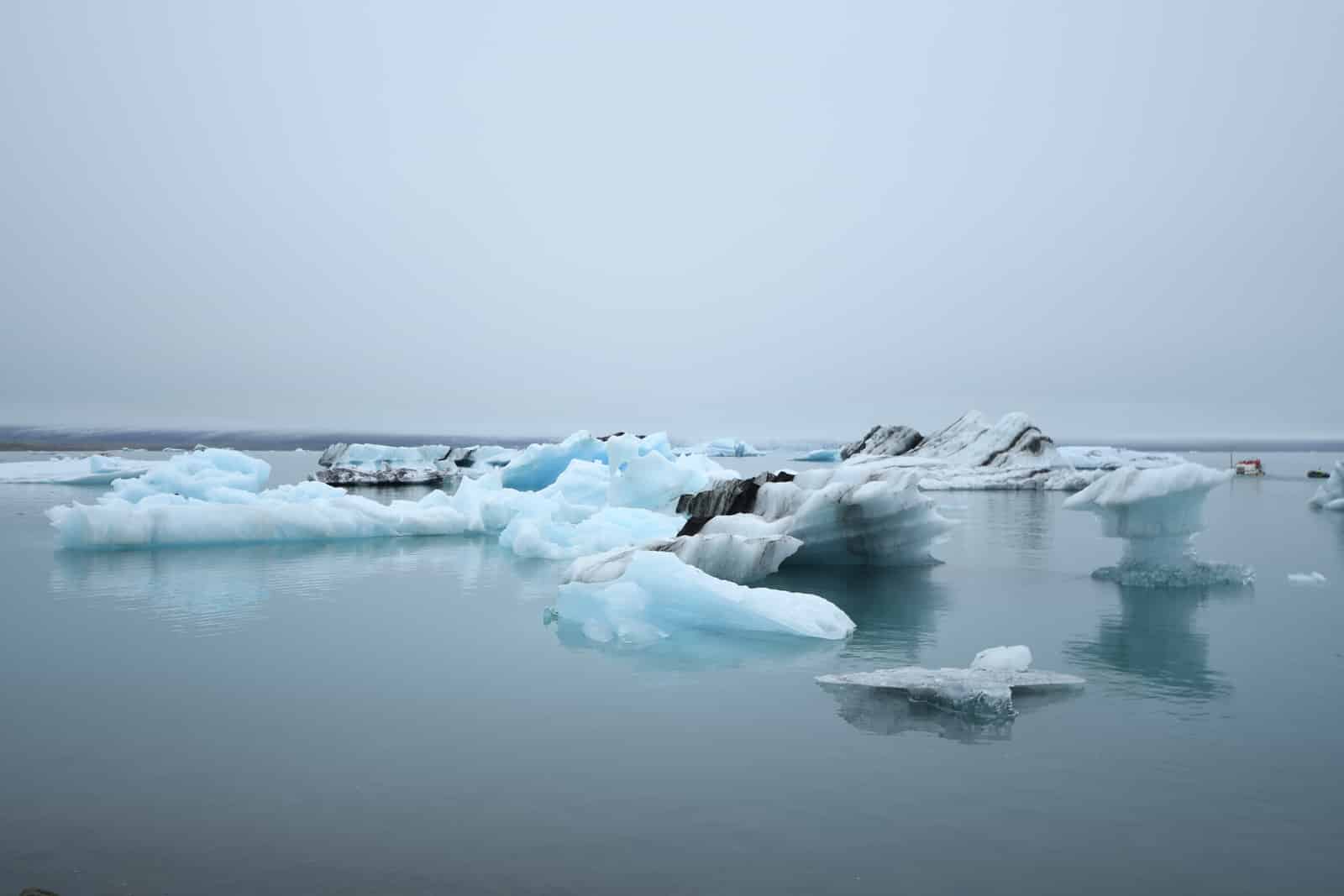
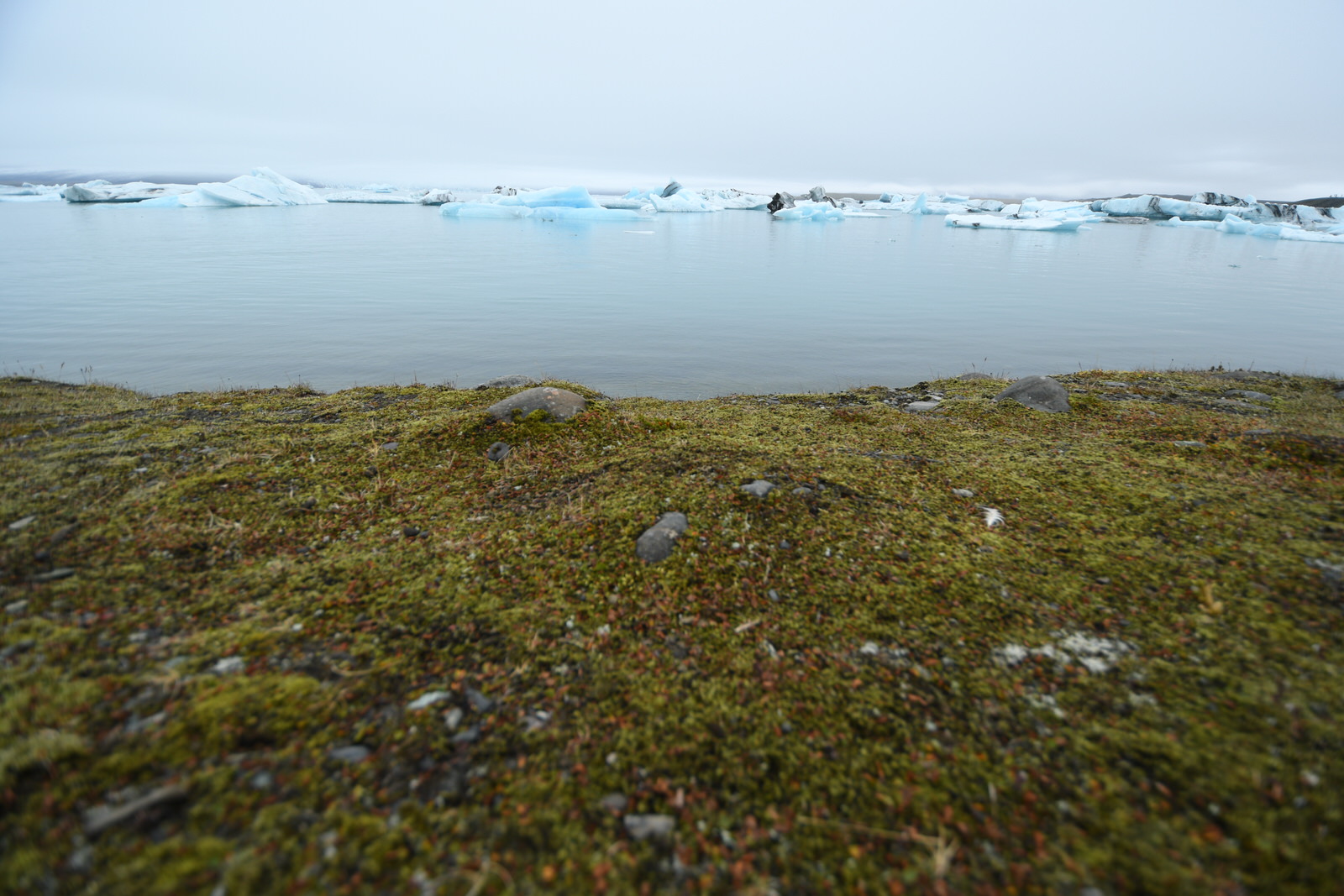
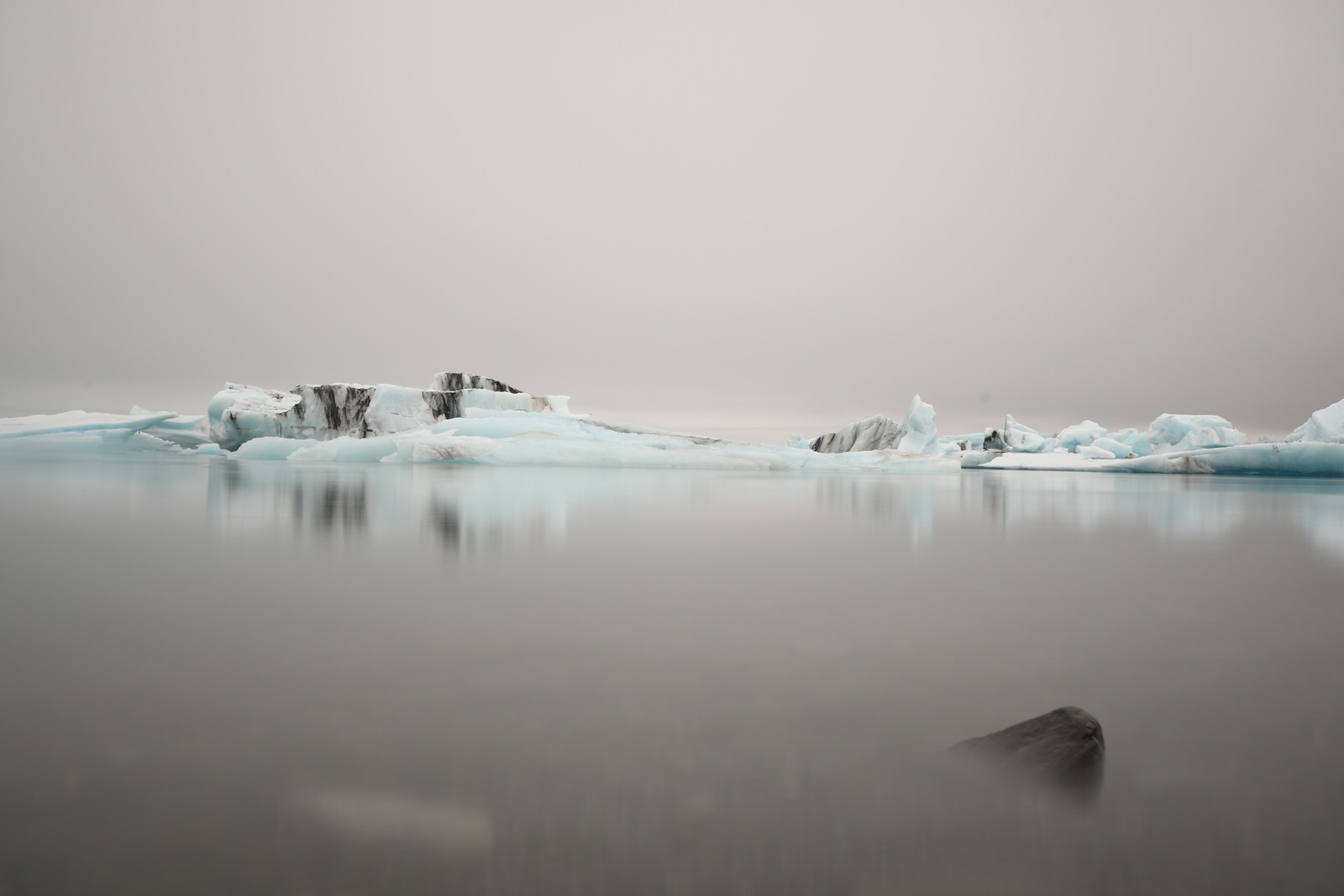
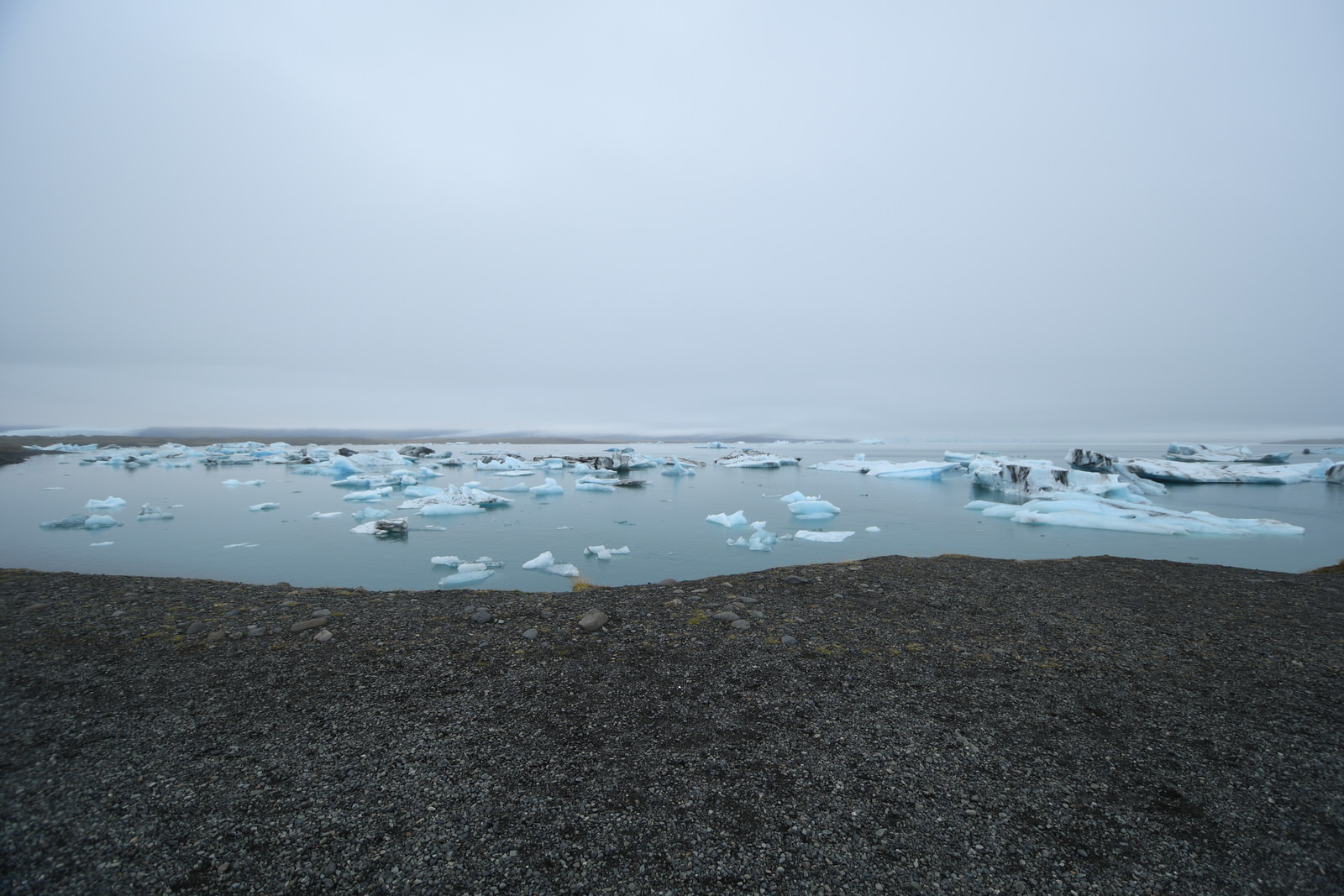
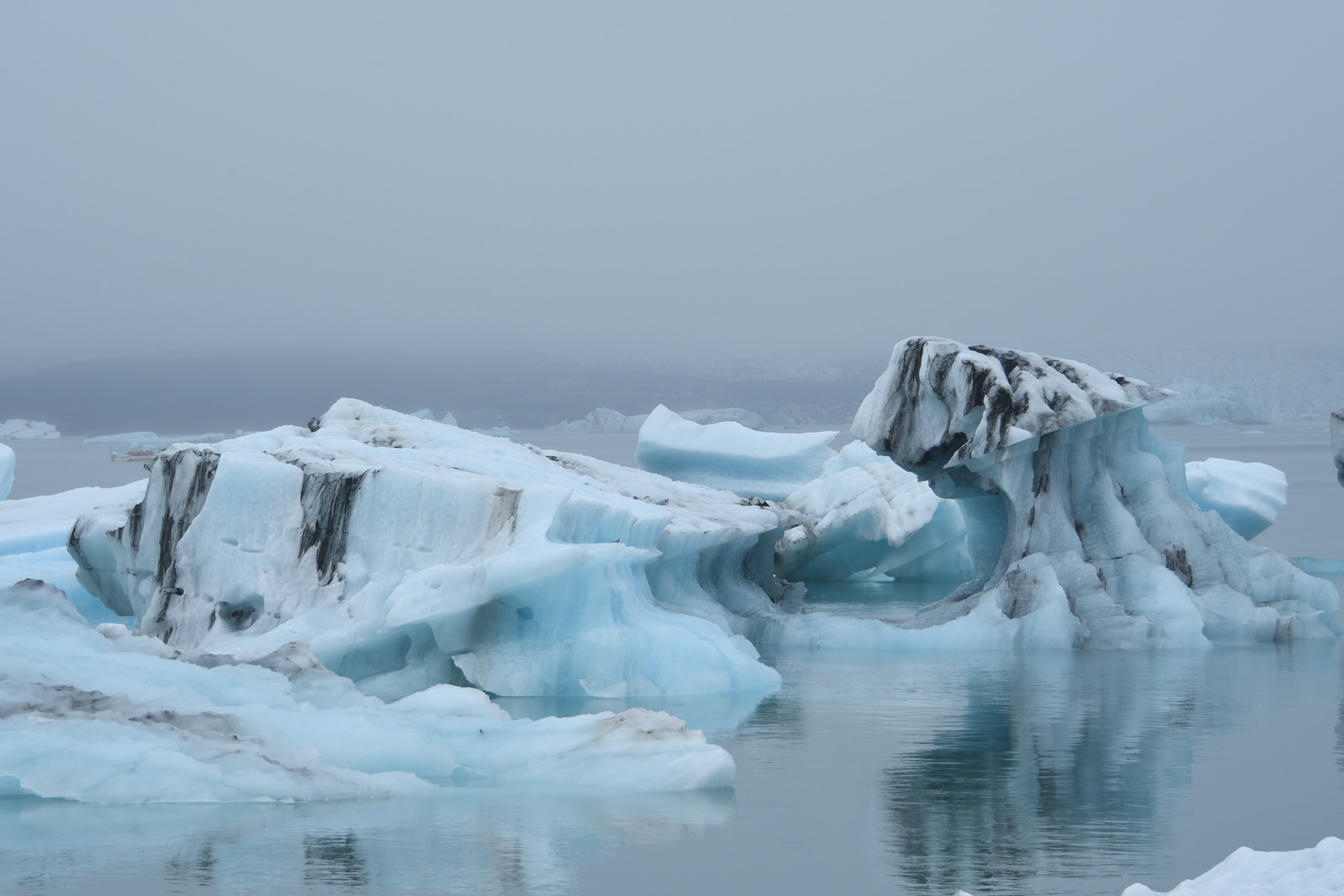
Day 10 : Vik black beach and the DC3 on Sólheimasandur beach
In March 2016 the famer owning the land (Sólheimasandur) where the DC3 crashed banned the access to vehicles. He did well. Now you have to walk 4-km to reach the site. There were not more than a dozen tourists when we arrived, including 4 young disrespectful German backpackers who climbed on the plane.
The walk (back and forth + some time on site to take pictures) took us 2,5 hours. It’s pretty surrealist to see this plane here and you can definitely take good pictures. However, if you want to take different pictures, you’ll have to come at odd times of the day which we couldn’t do.
After Sólheimasandur we drove to Vik to see the black sand beach. I would have loved to find the spot where the well know pictures are taken but I couldn’t find it and we were also short on time. Being on this beach was a rejuvenating moment for me. No pictures taken but just a moment with myself and my family.
The day ended here as we had to drive back to Reykjavik to our third and final home camp.
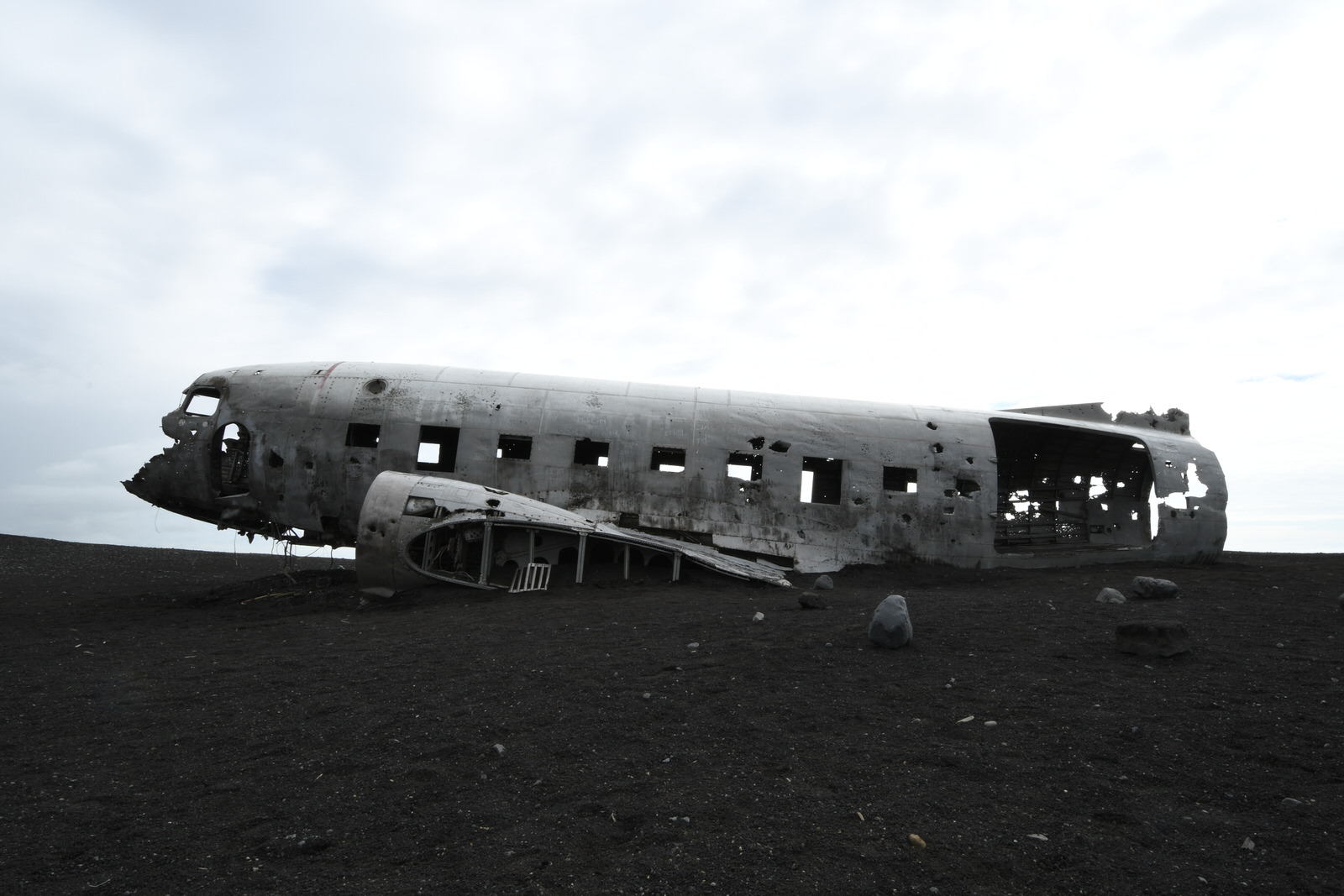
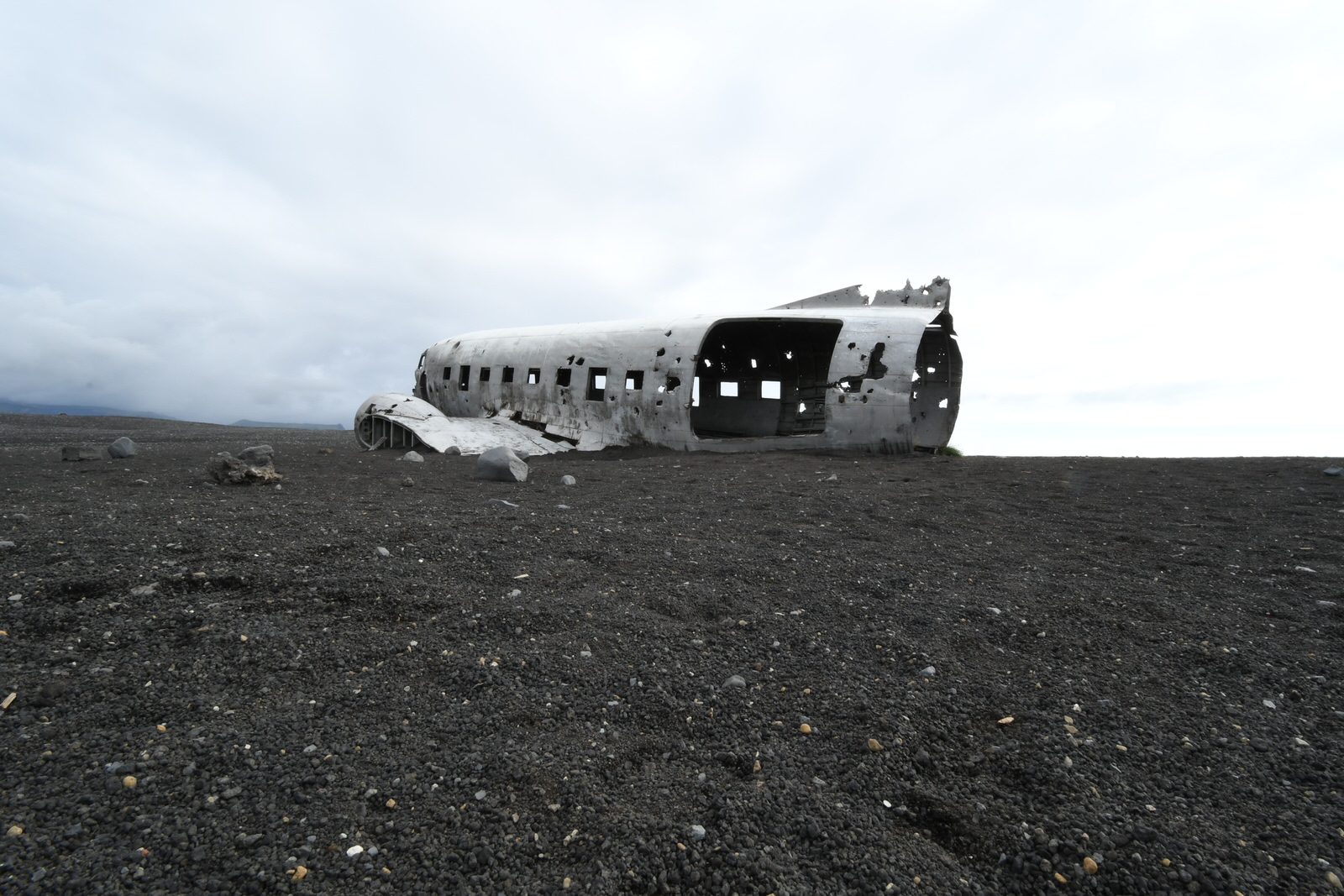
Day 11 : Reykjavik area
In the morning of Day 11 we were picked up by a pilot of Reykjavik helicopters. I had secretly booked a flight which, more or less, brought us back to some of the places we had seen on Day 3. We flew from the heli zone at Reykjavik domestic airport straight to Hvalfjördur and crossed it to reach the Glymur waterfall. What a view ! We you fly 900 feet from the ground the perspective is really amazing.
We then flew over the Þingvallavatn lake and landed in the mountains of the Reykjanes Geothermal System. This remote area, with no tracks to reach it, concentrated several geothermal wonders: sulfur springs, hot mud pots, a warm river, a boiling turquoise hot pot, … you name it. After that we started again the heli and flew back to Reykjavik. On the way home we were able to clearly see lava fields from above which is also quite interesting.
In the afternoon we visited Reykjavik, its opera house, and spent the last hours of the day in Reykjanesviti (where we looked at the Eldey island), Gunnuhver, Hafnaberg and finally visited the Blue Lagoon.
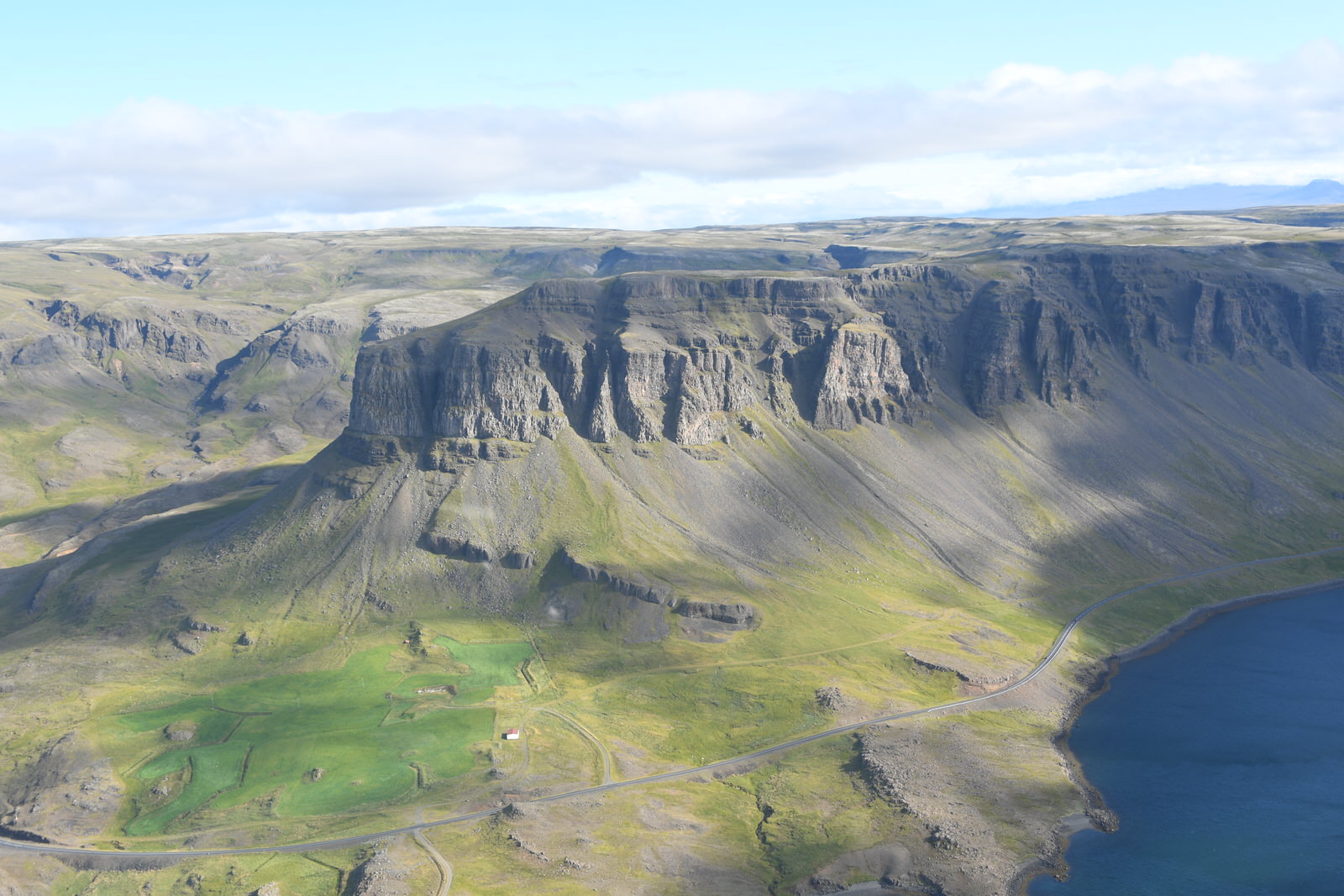
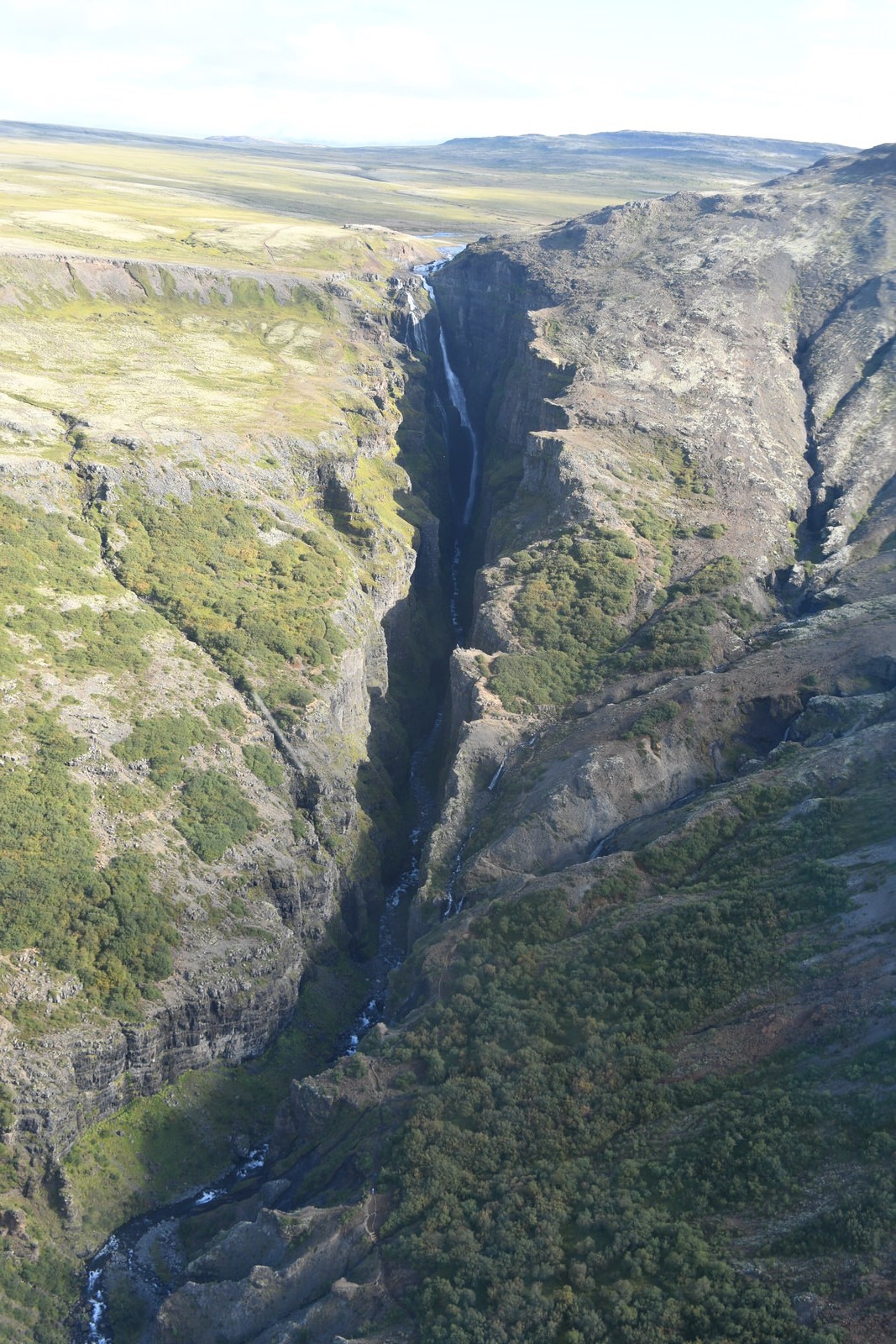
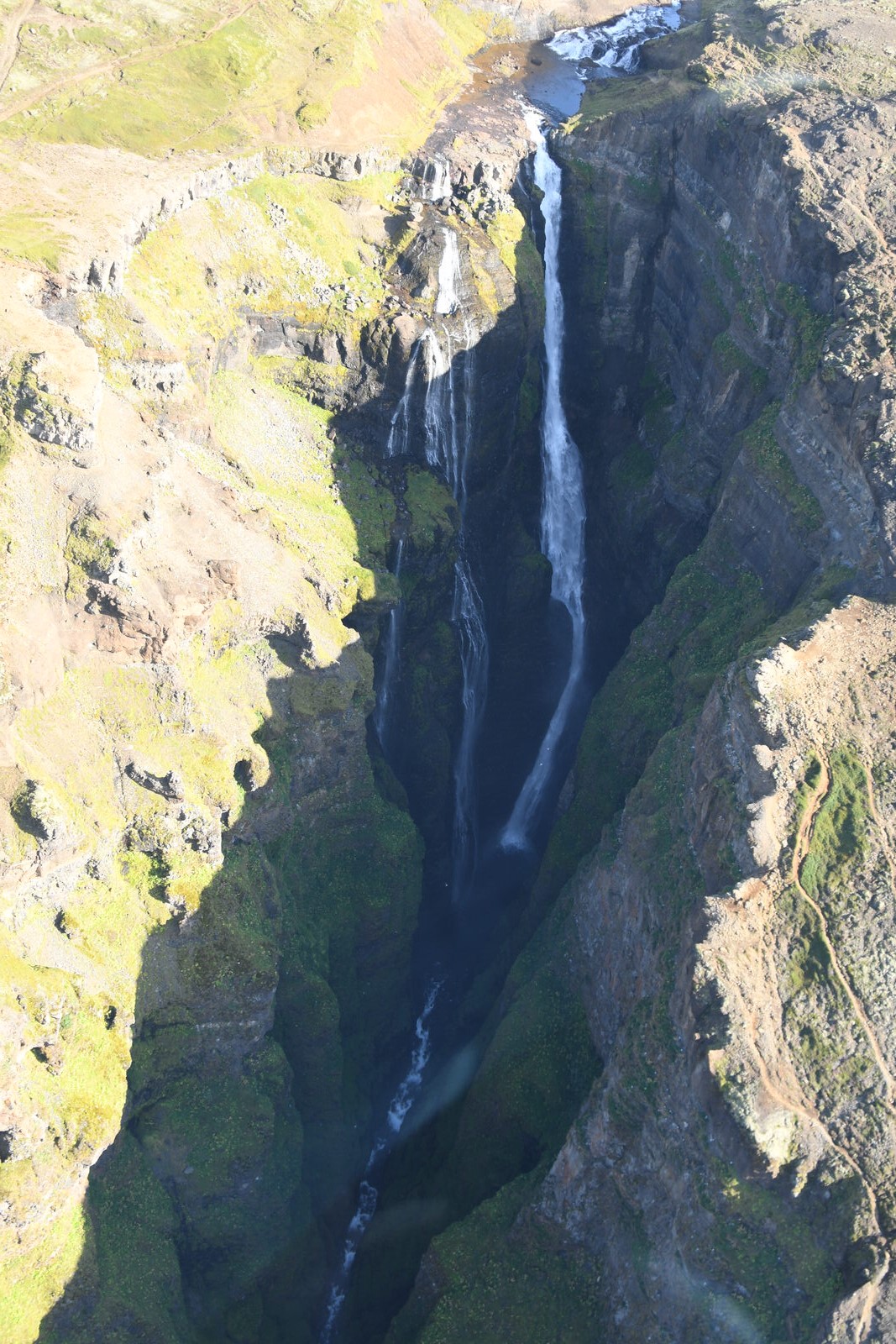
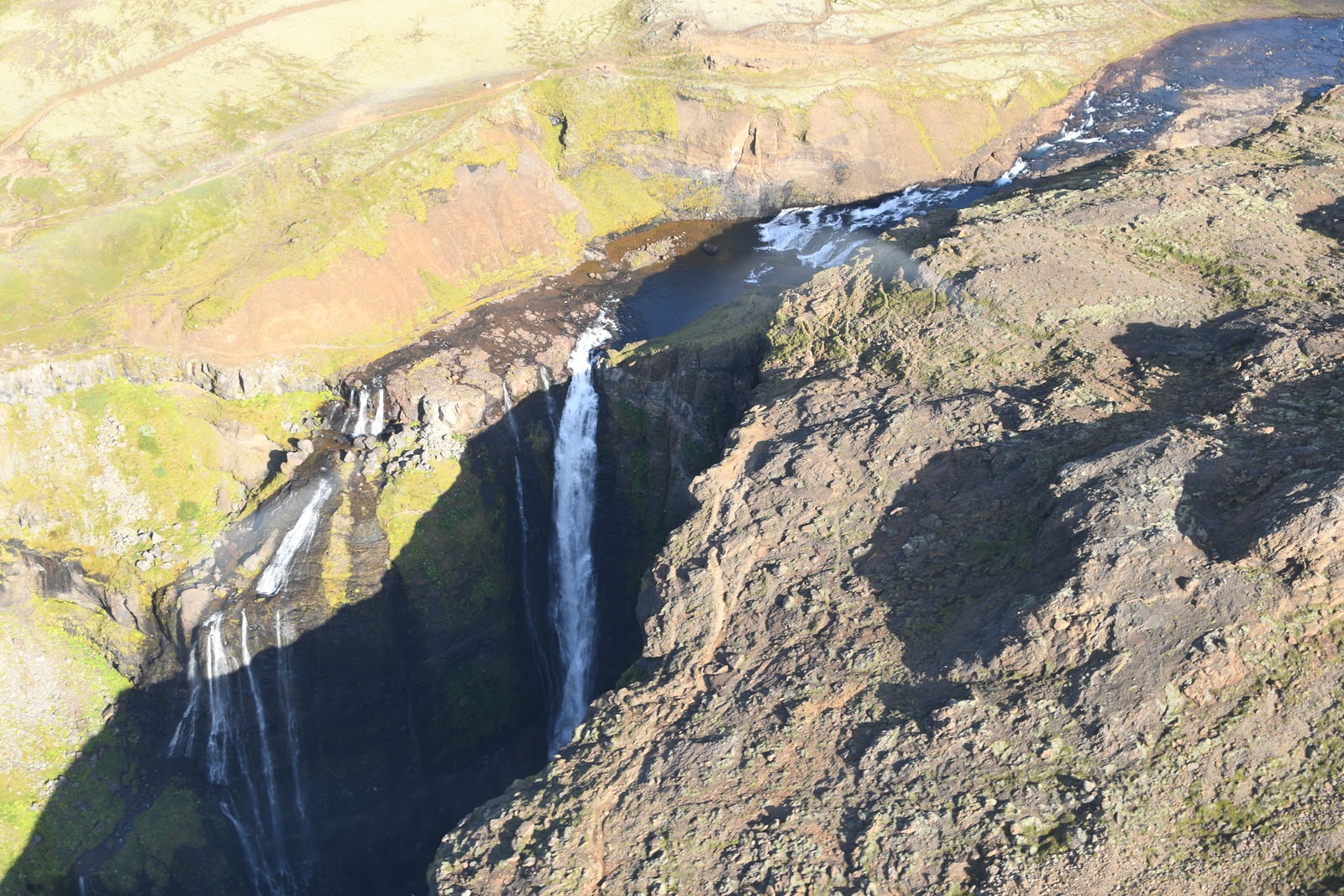
Day 12 : geothermal wonders
For our last day in the Reykjavik area we chose to explore the southern part of the Reykjanes area. We took road 42 along Klaifarvatn to reach the sulfur springs of Seltun. From there we drove to the turquoise crater lake of Graenavatn, whose color can’t be reflected by pictures. It’s just unreal.
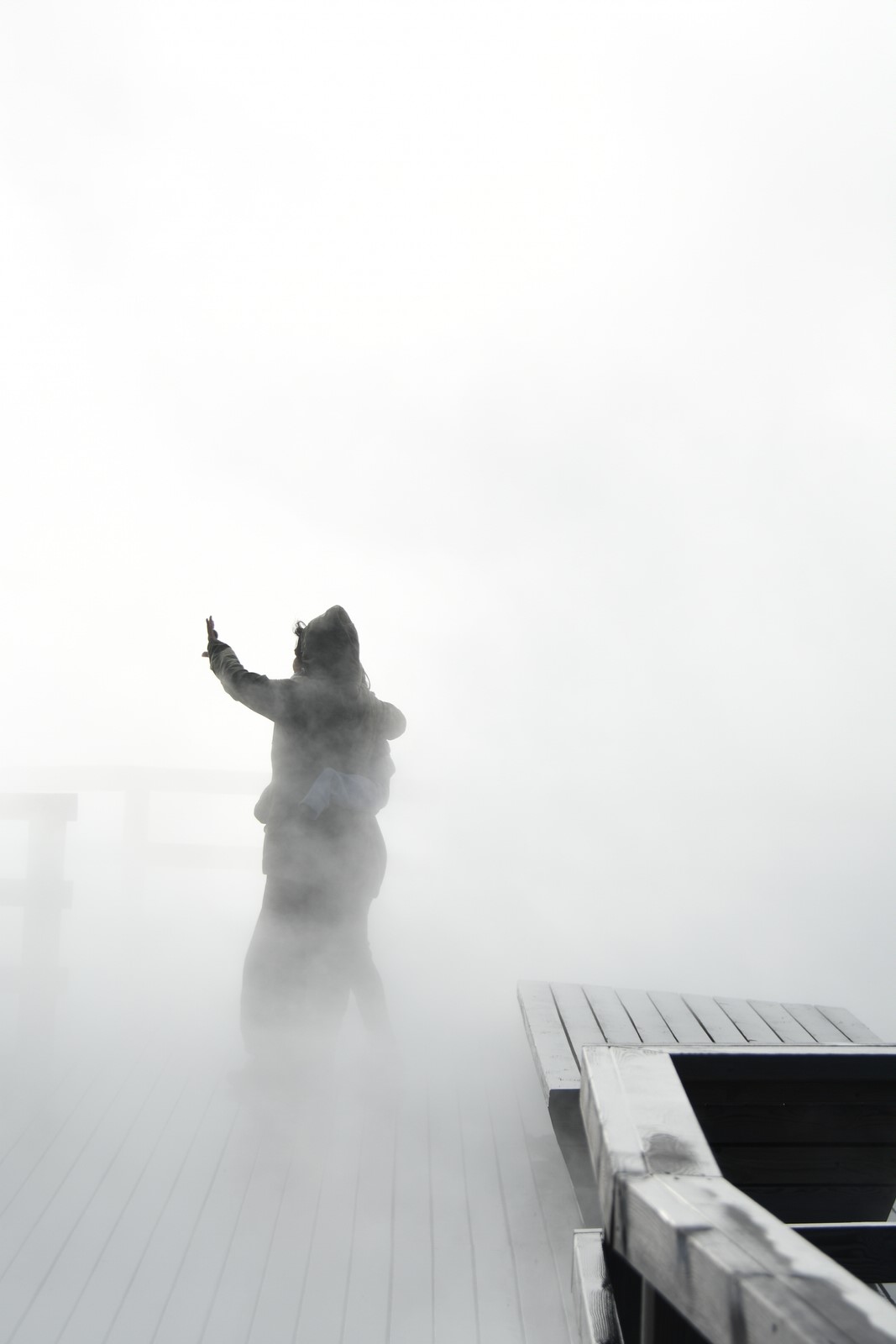
Posted in Misc..

